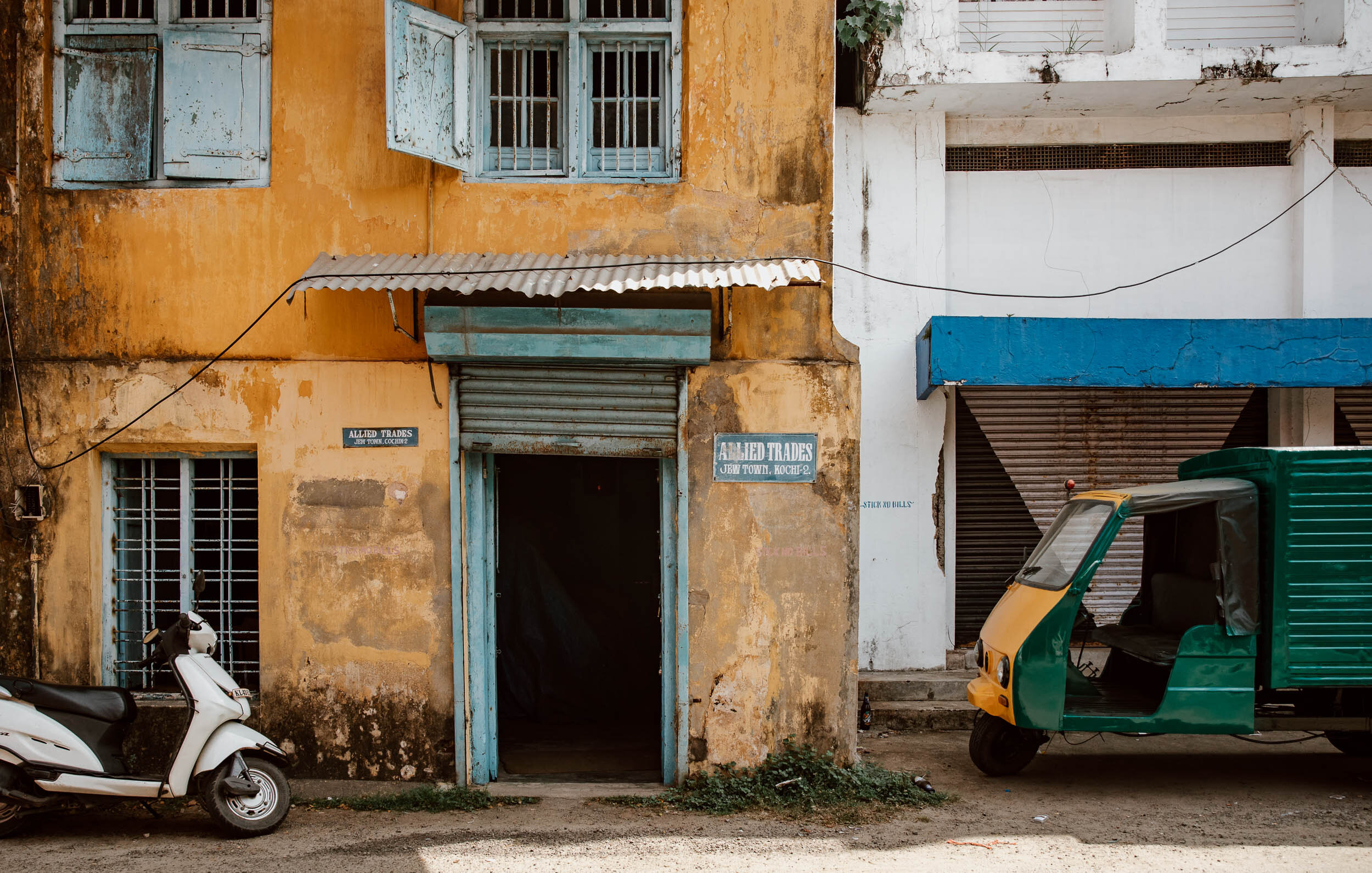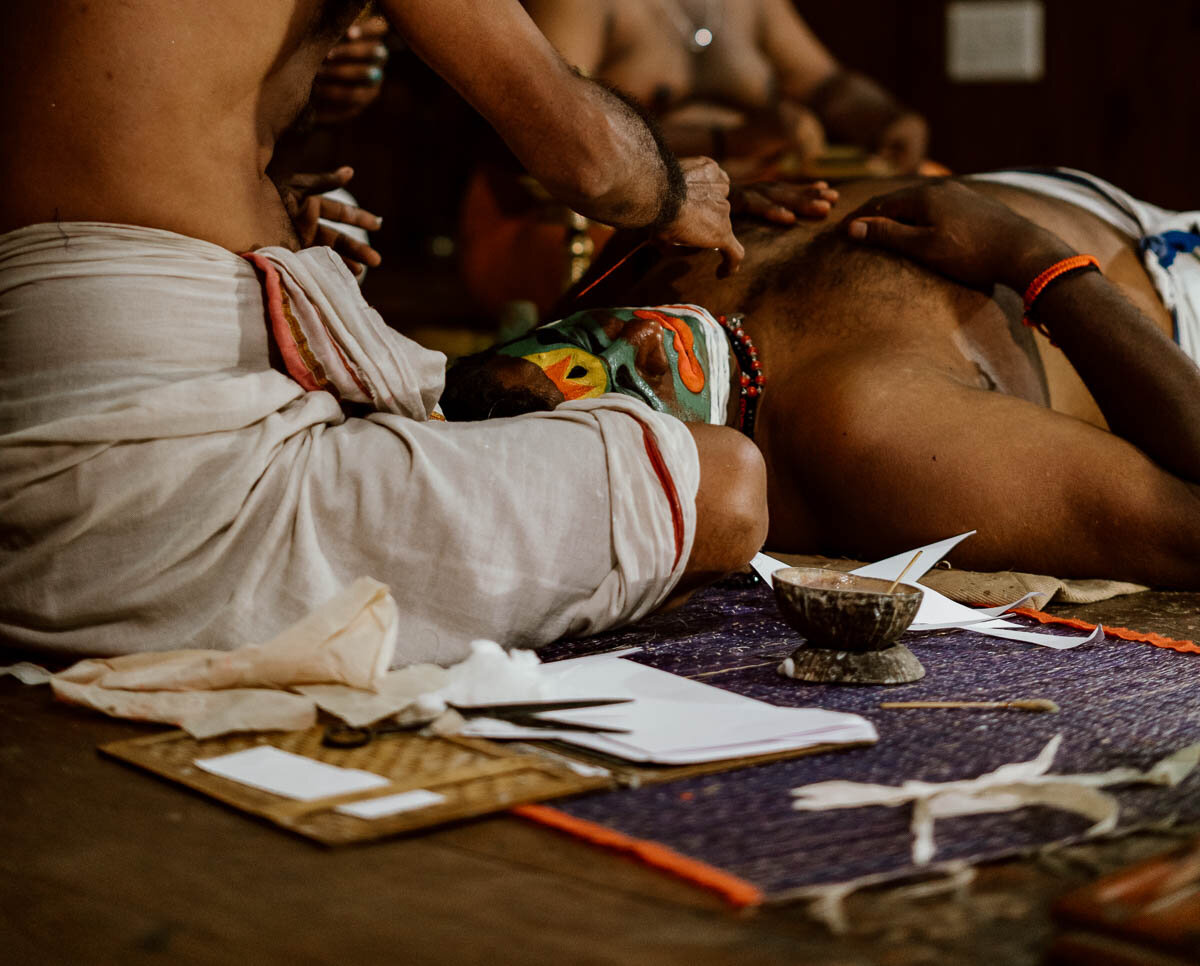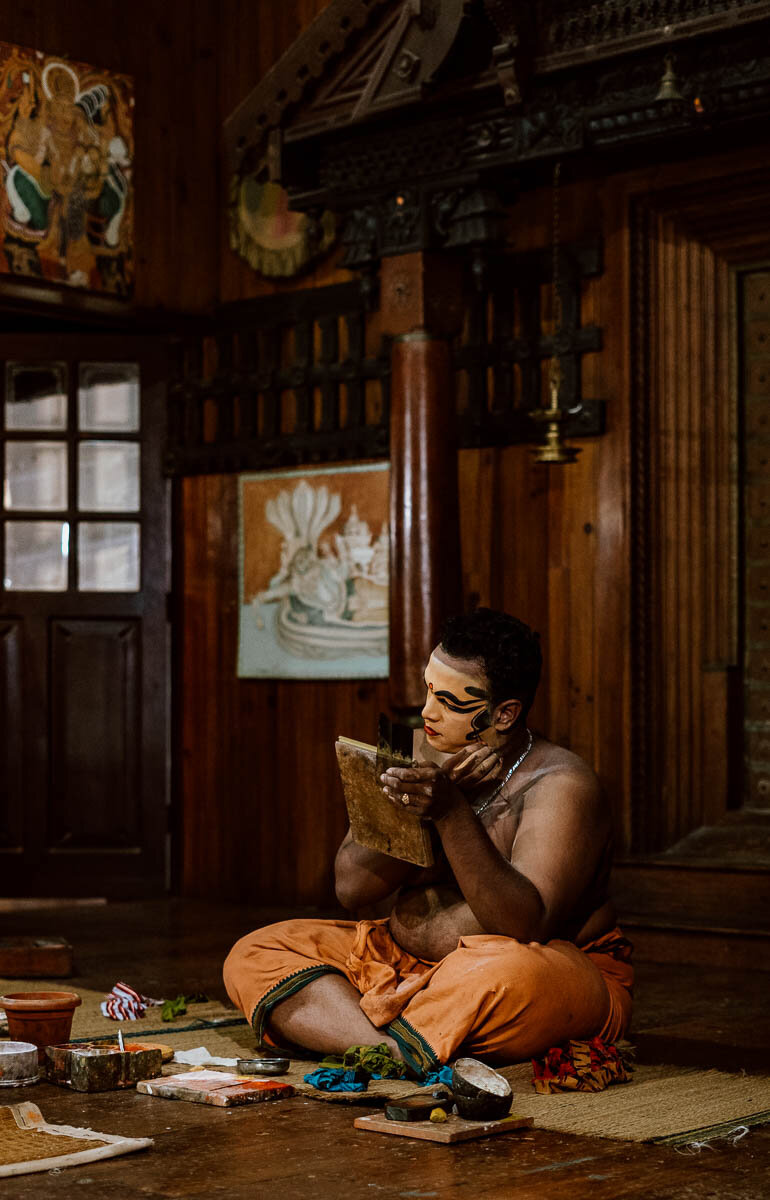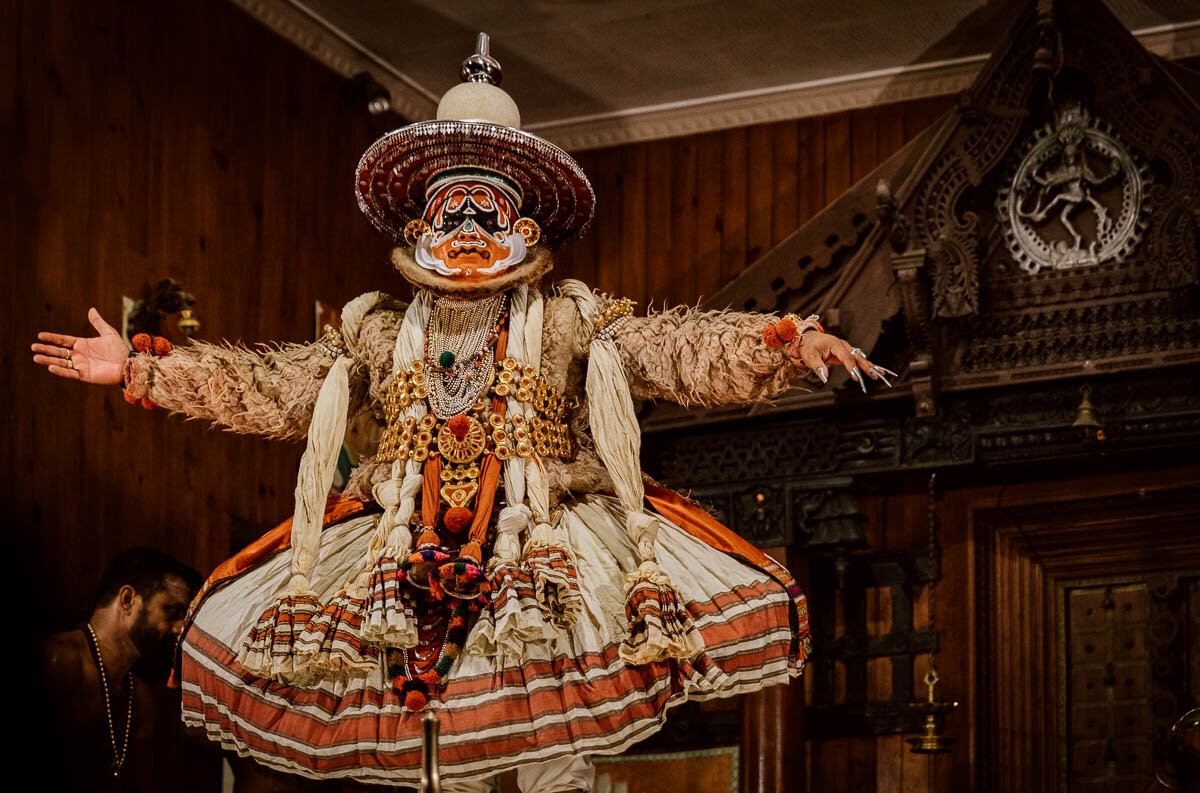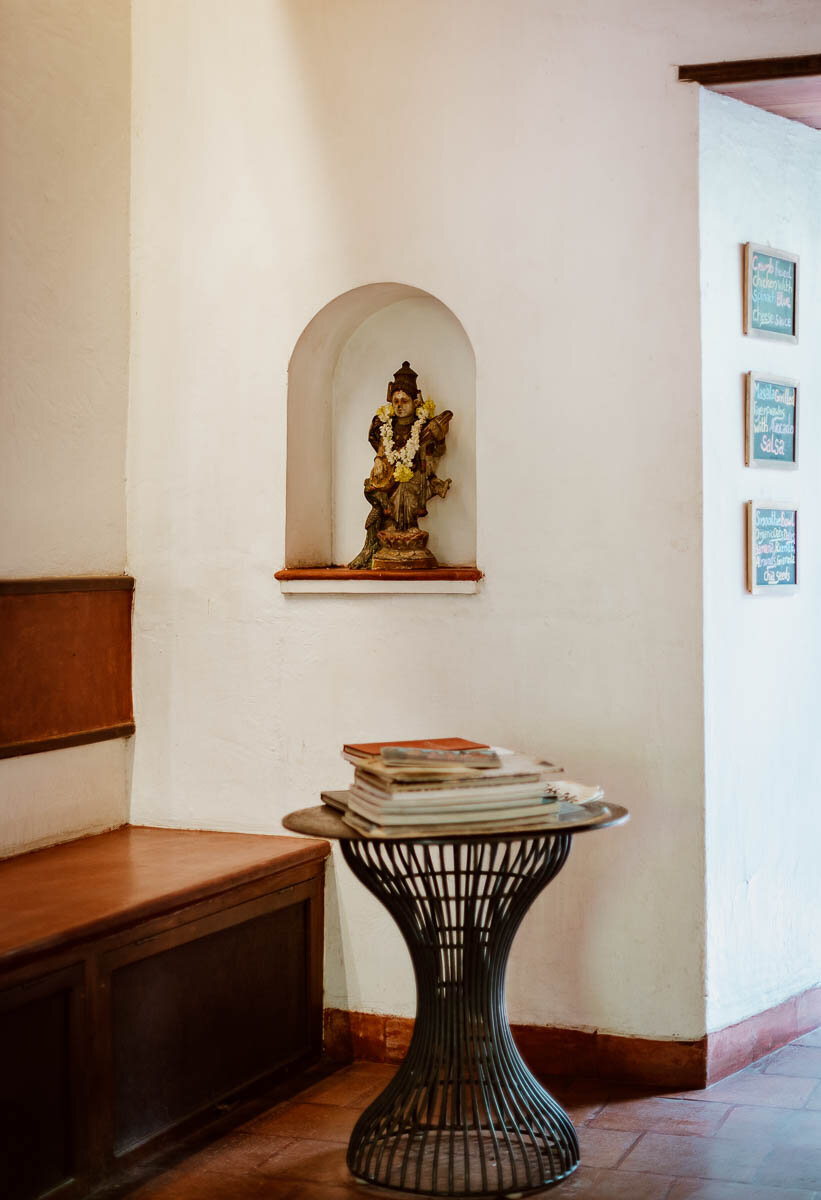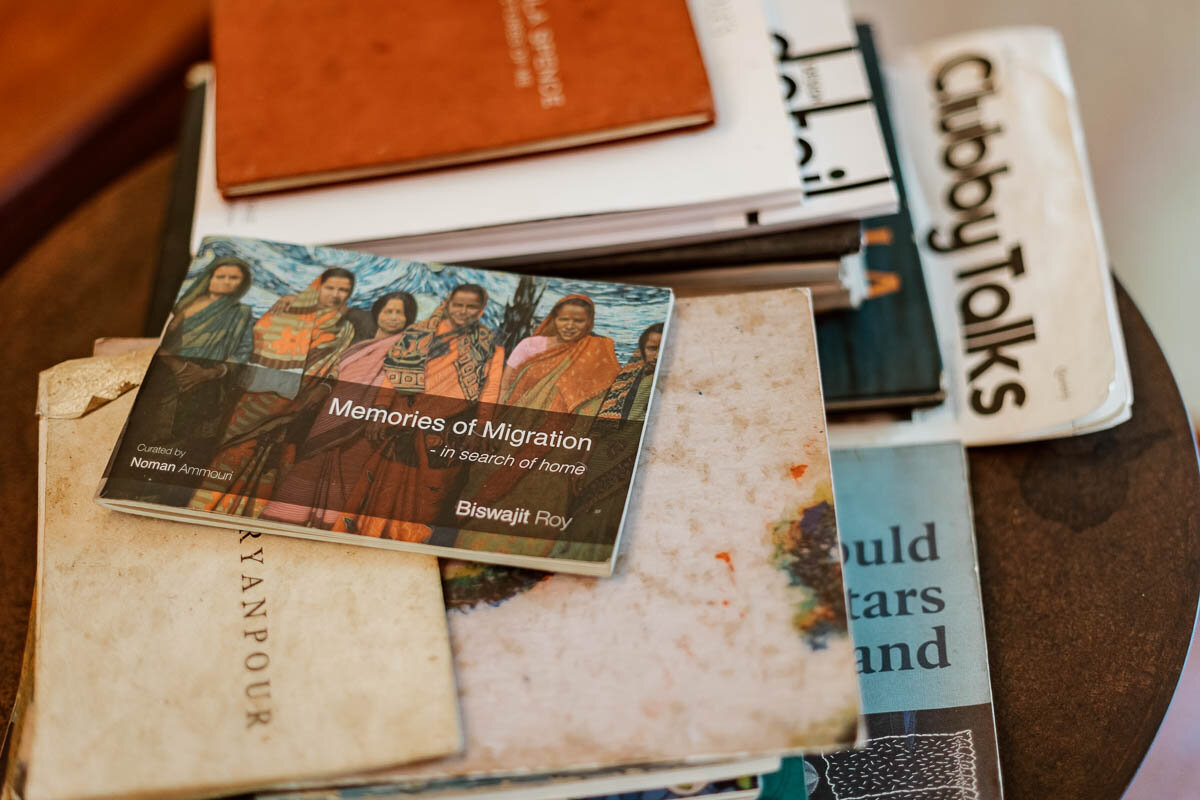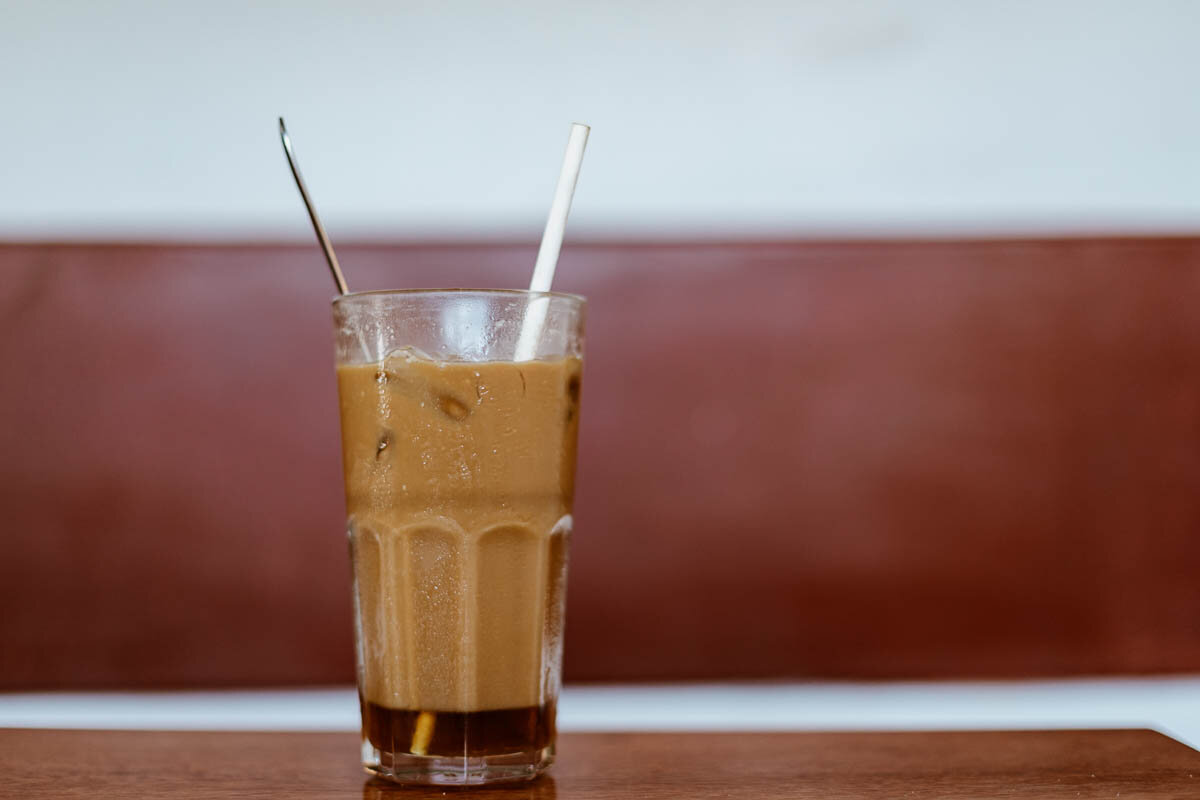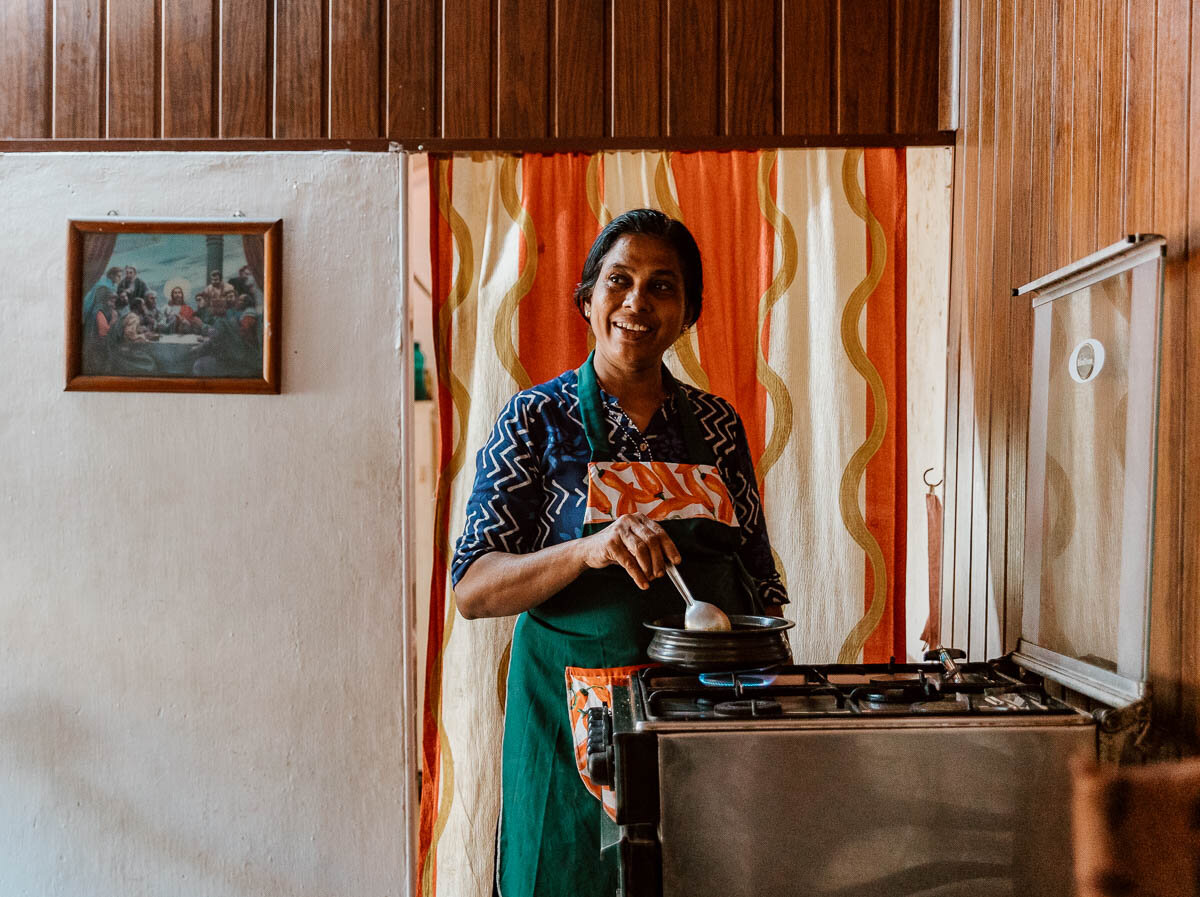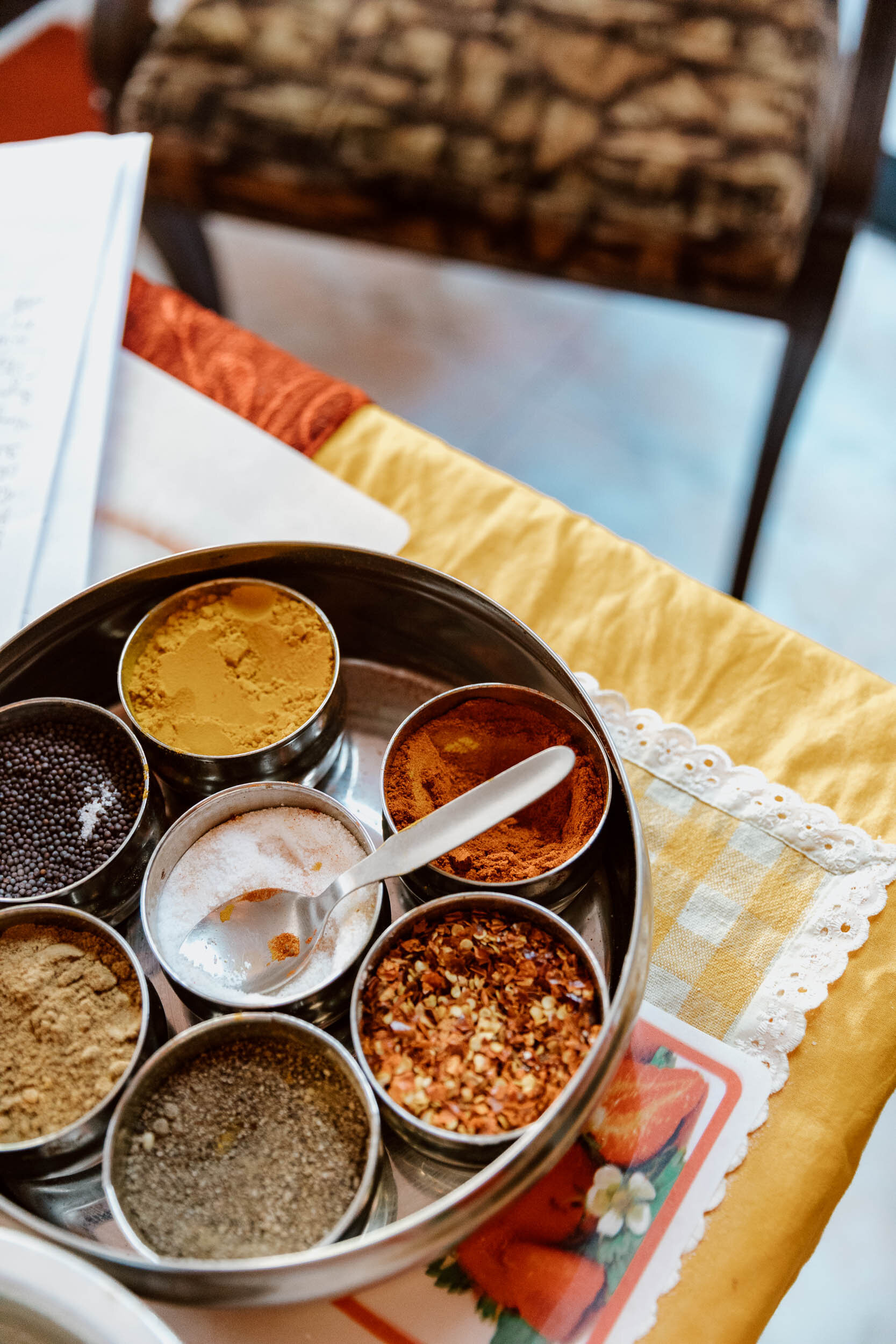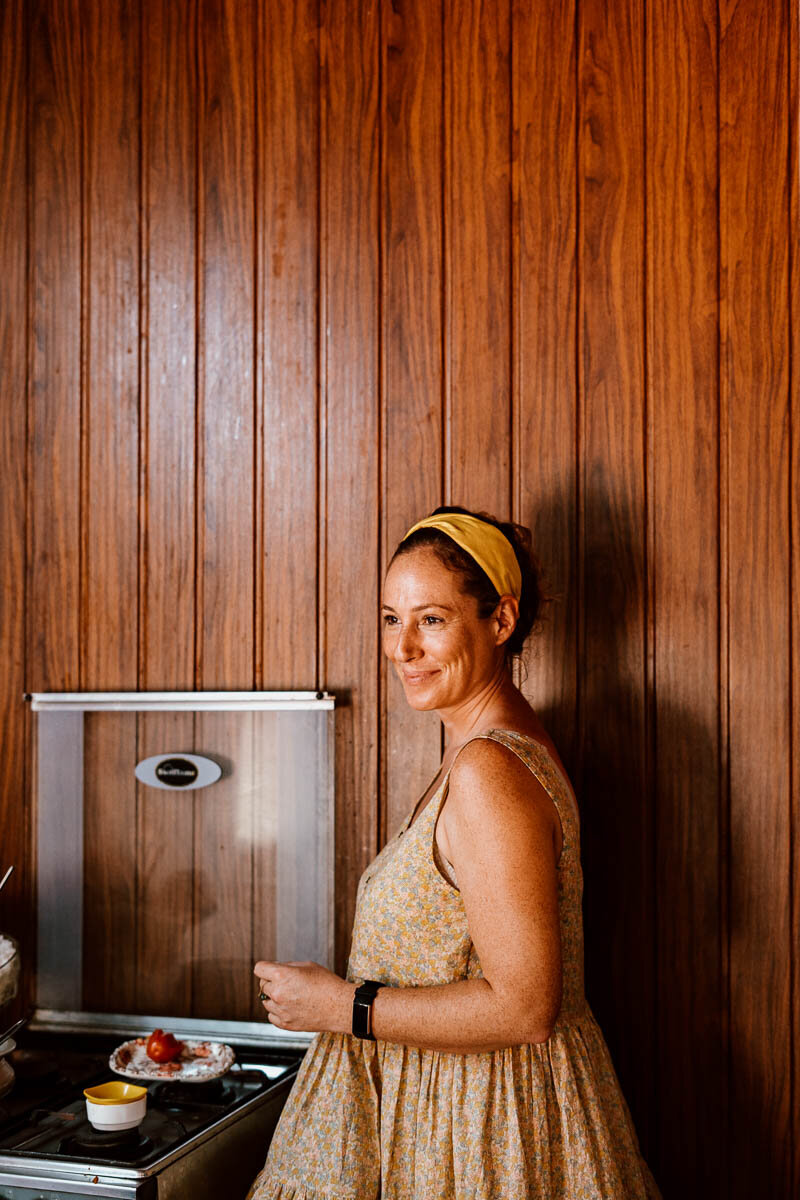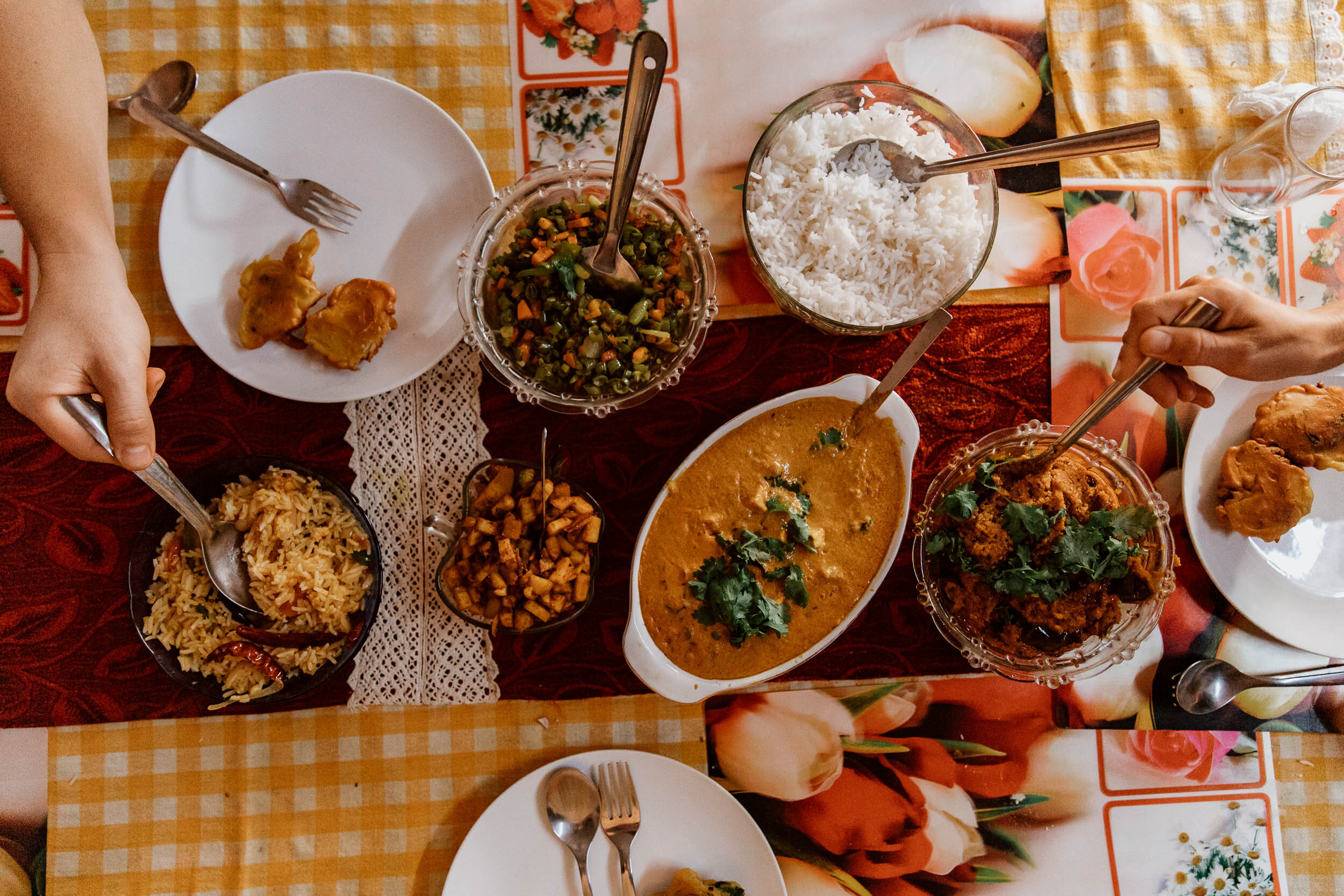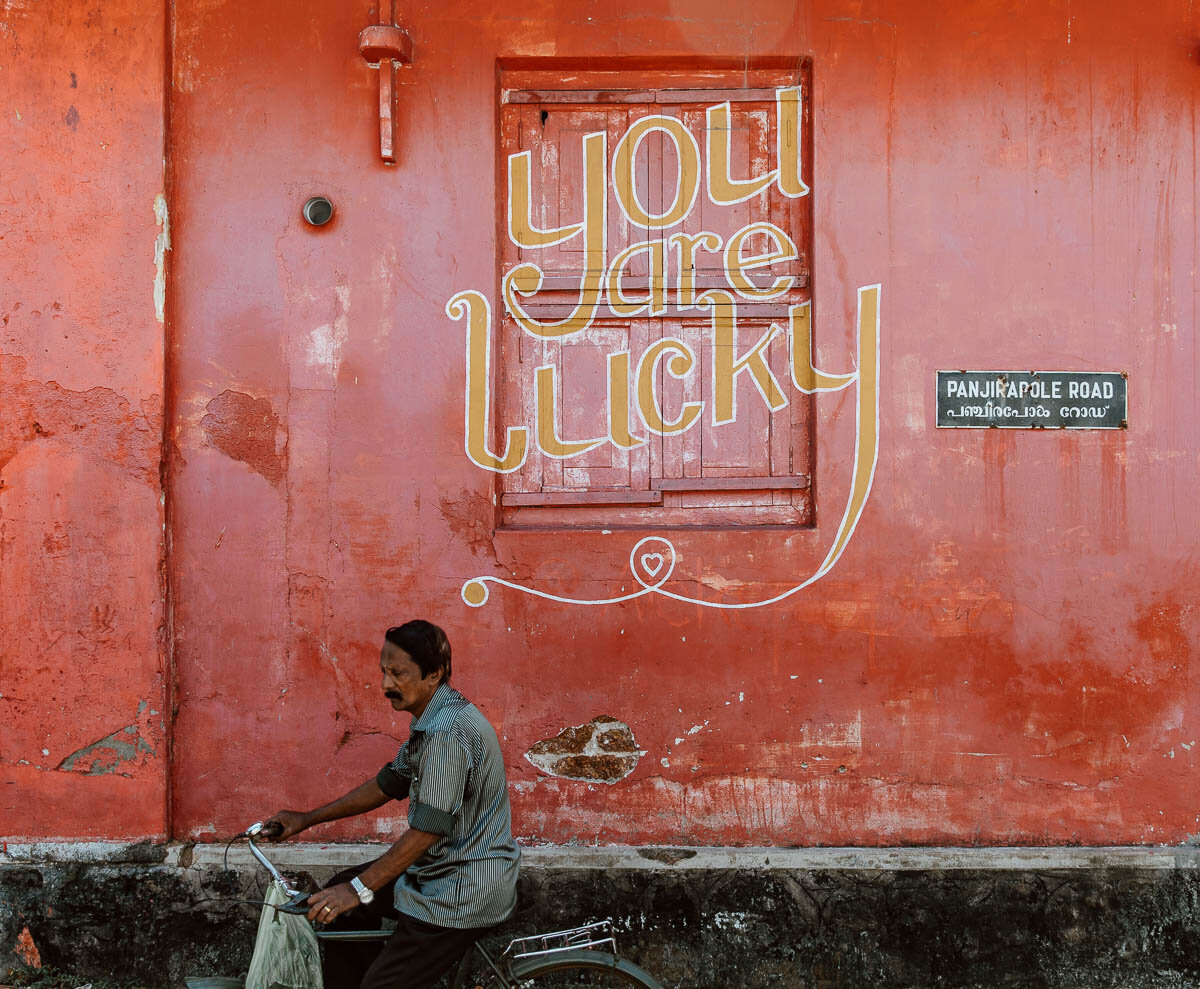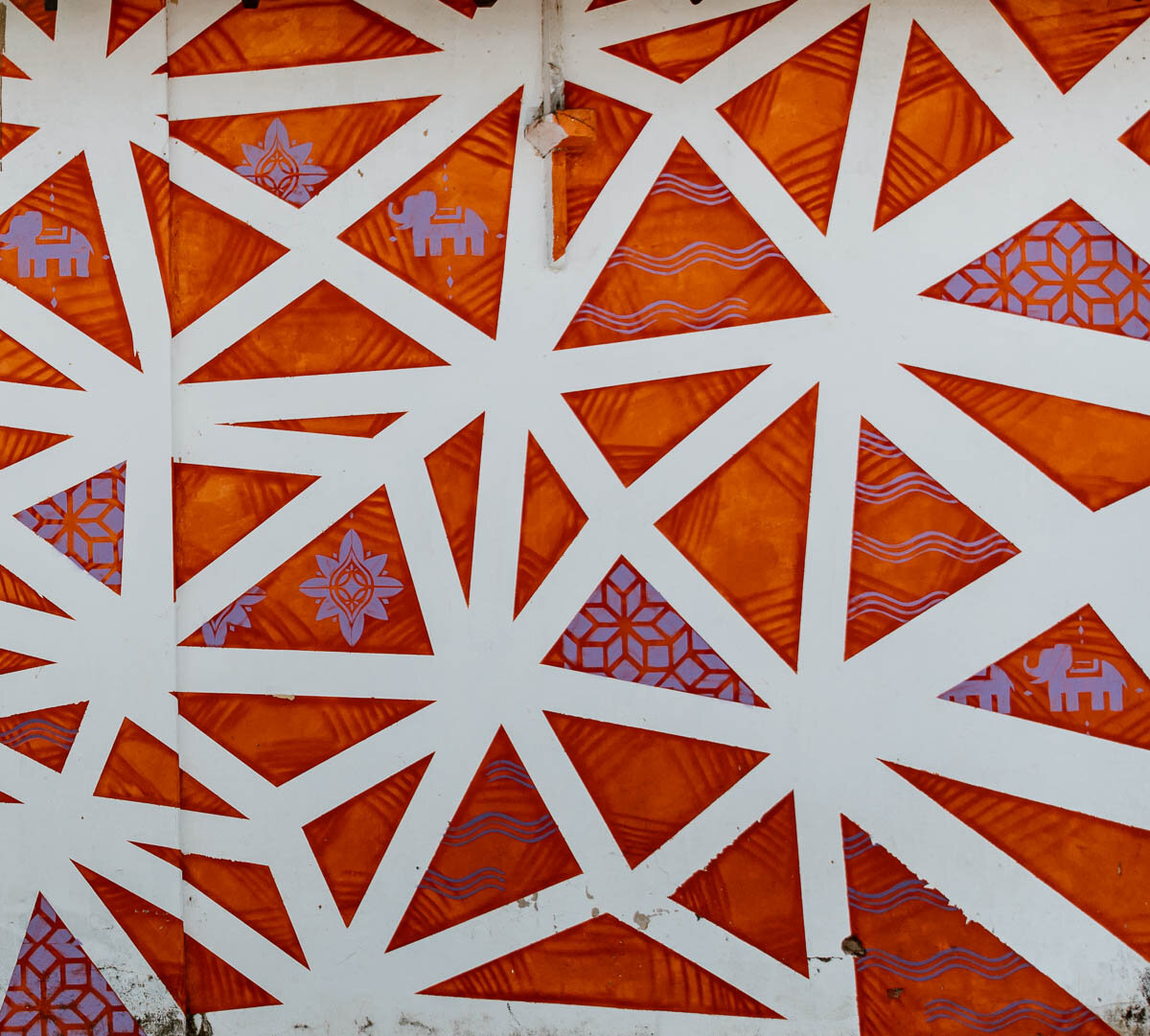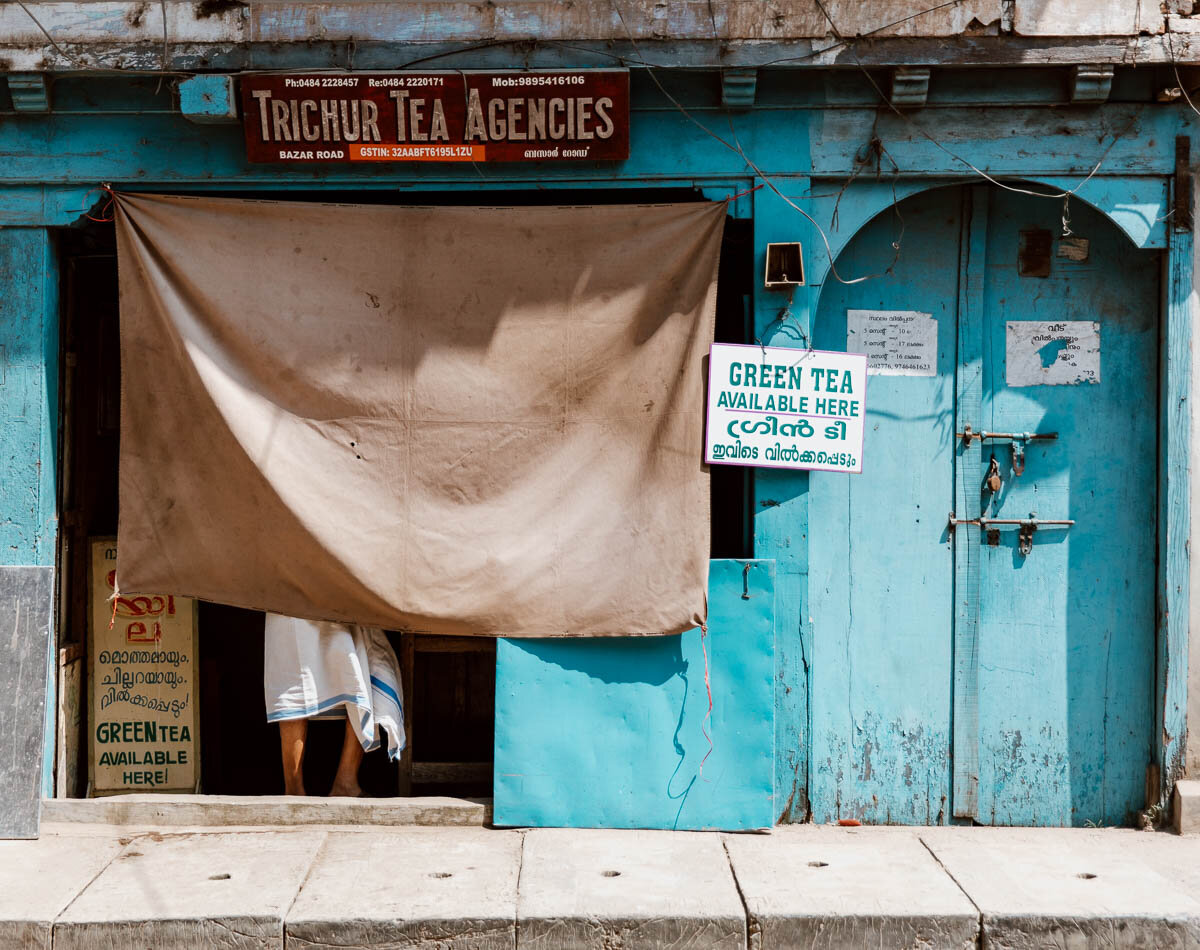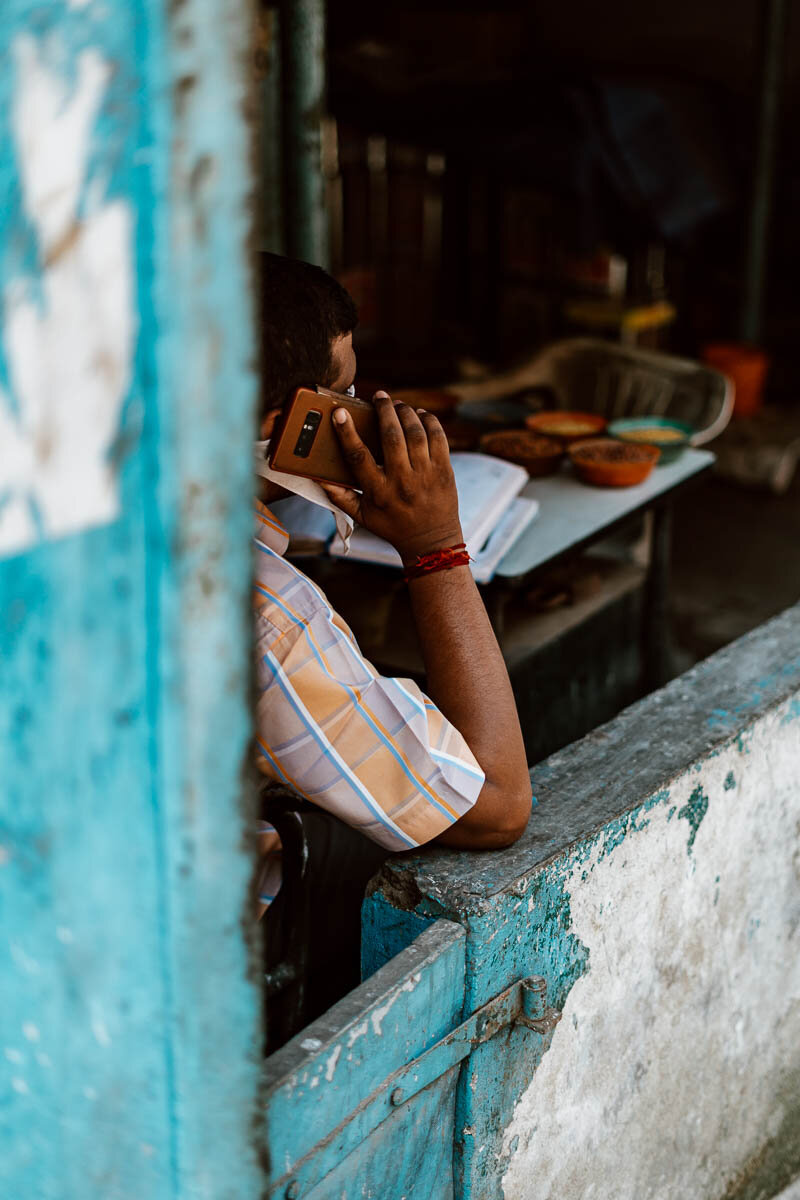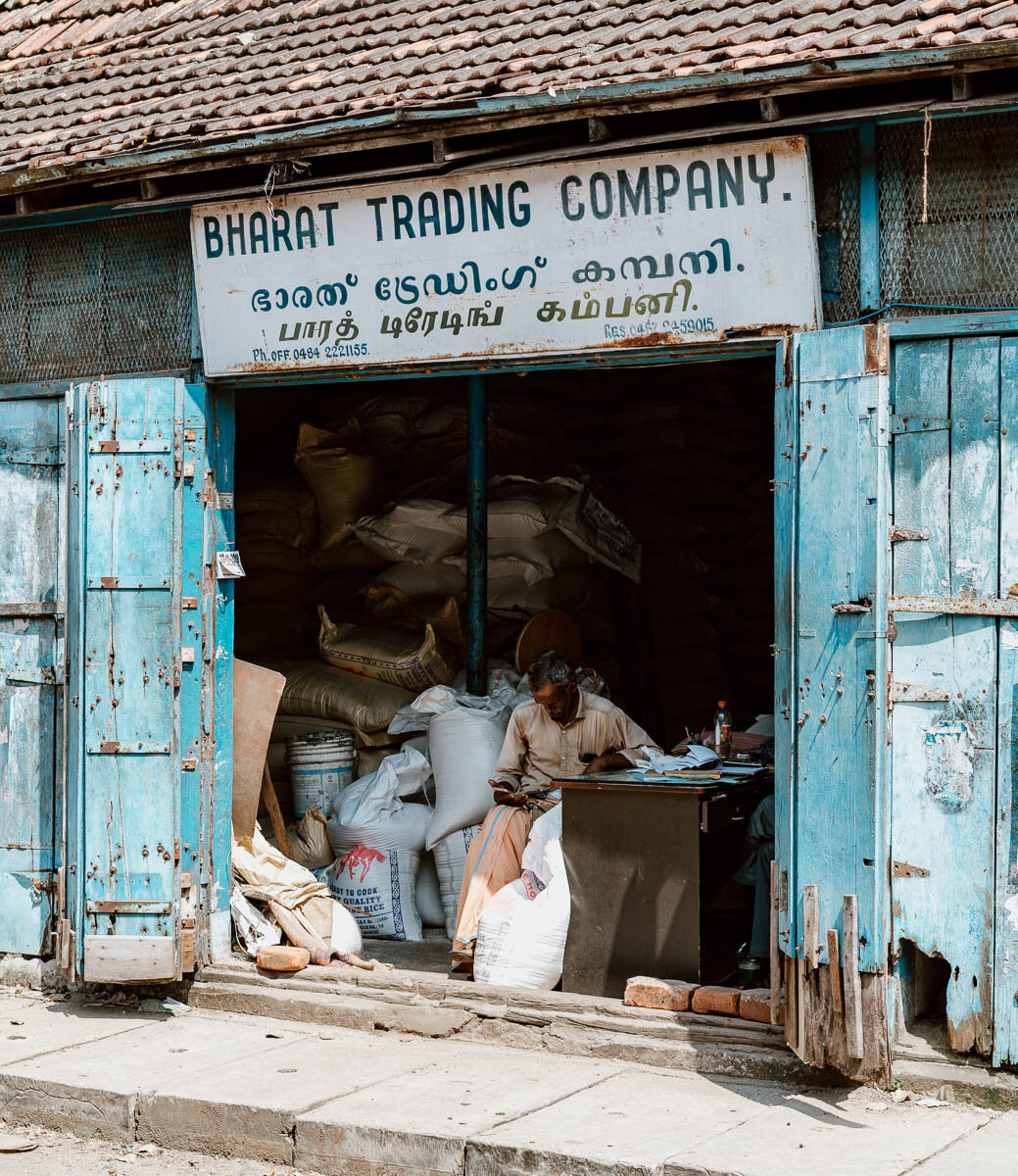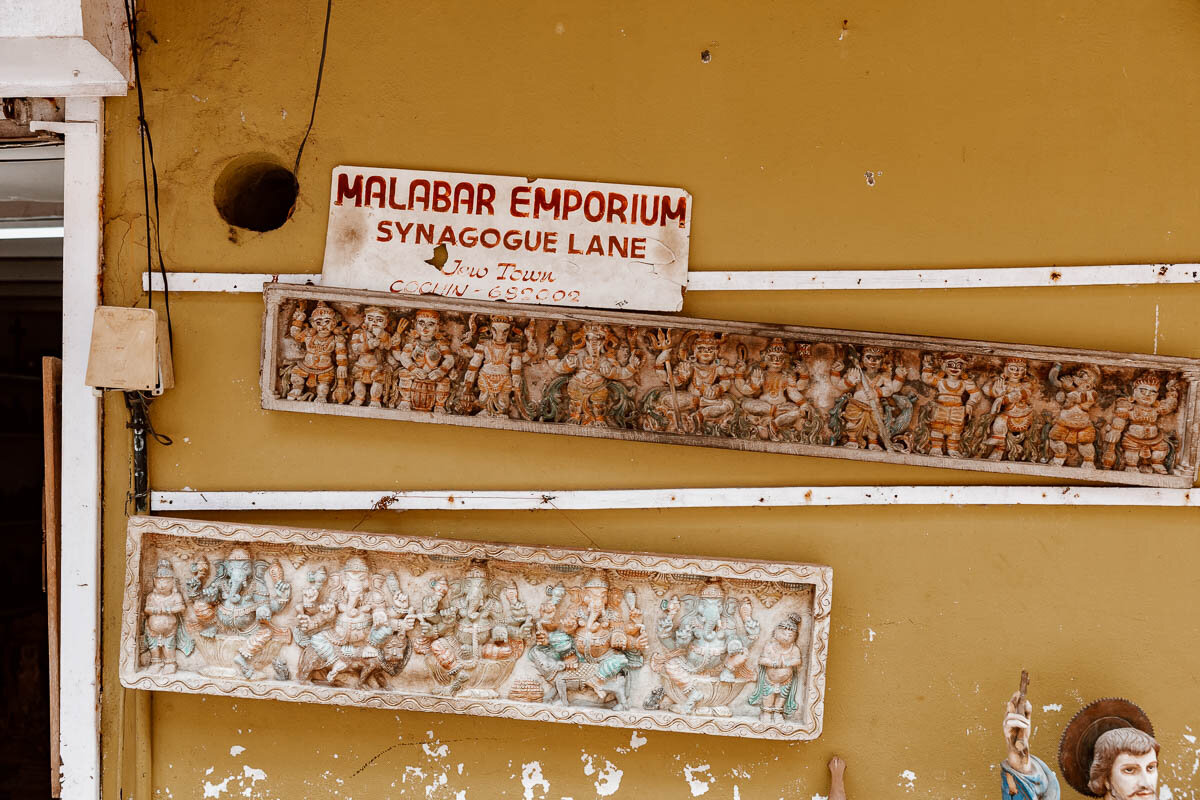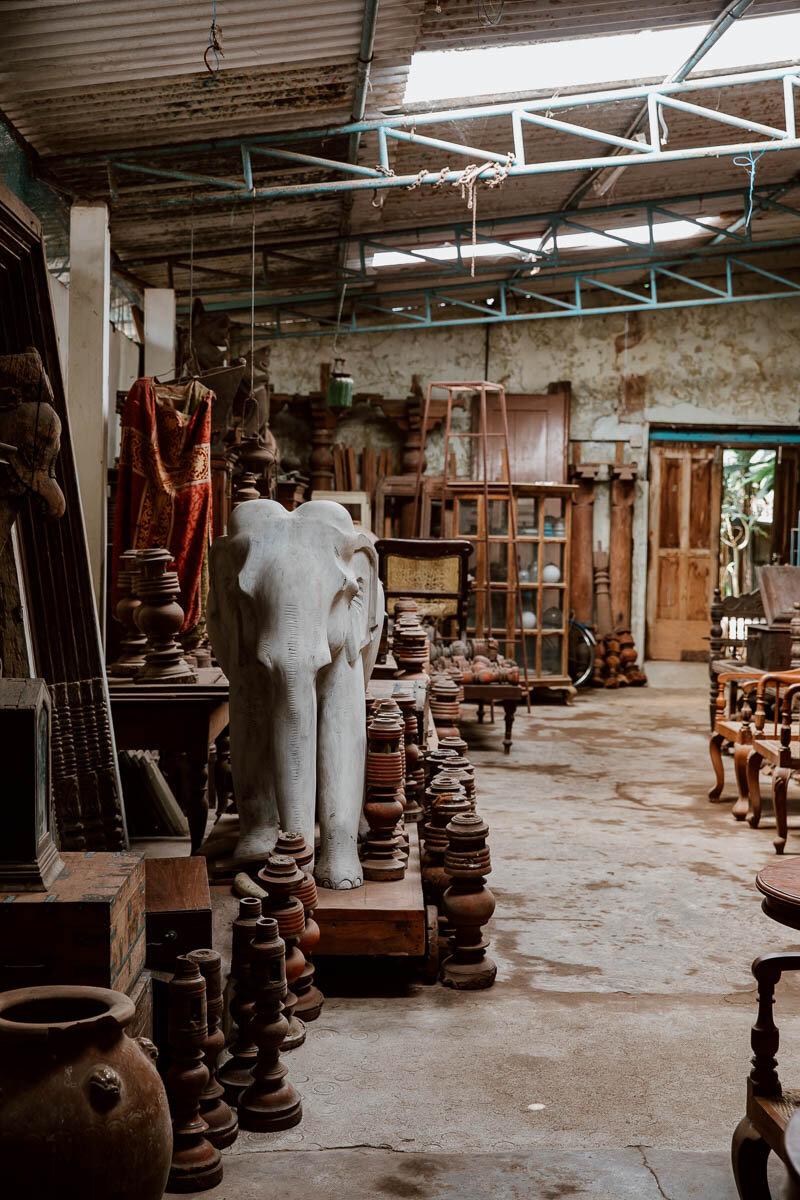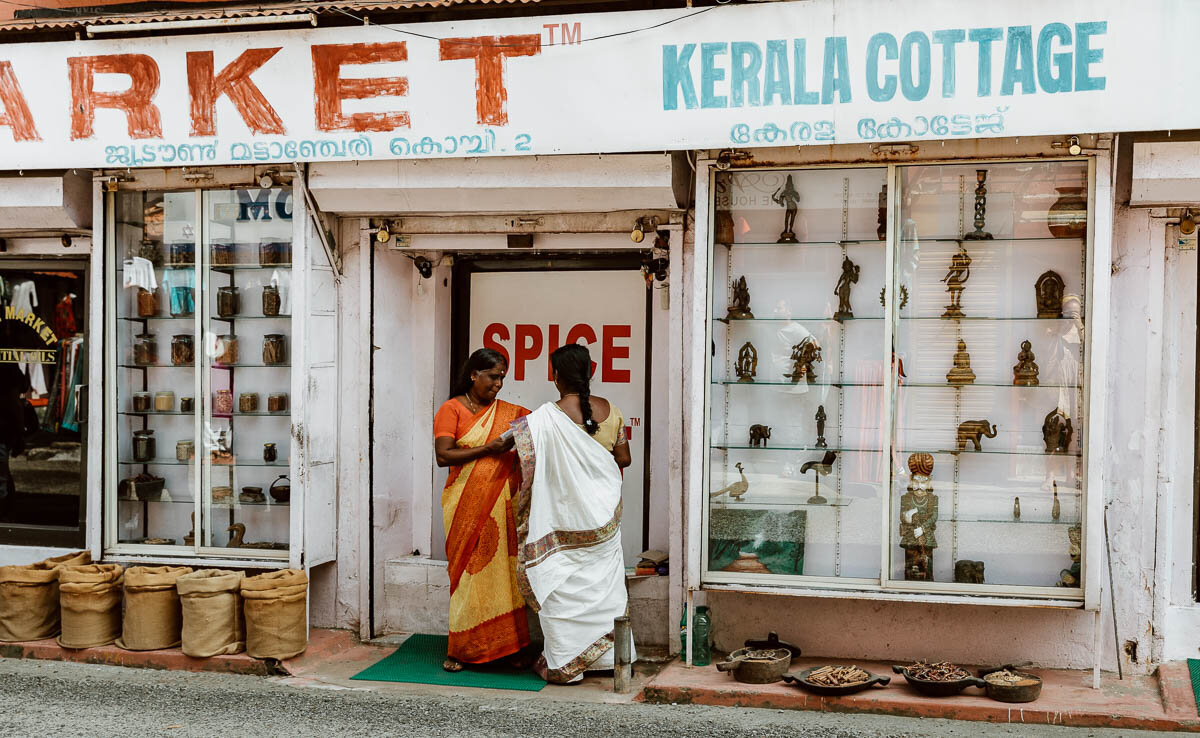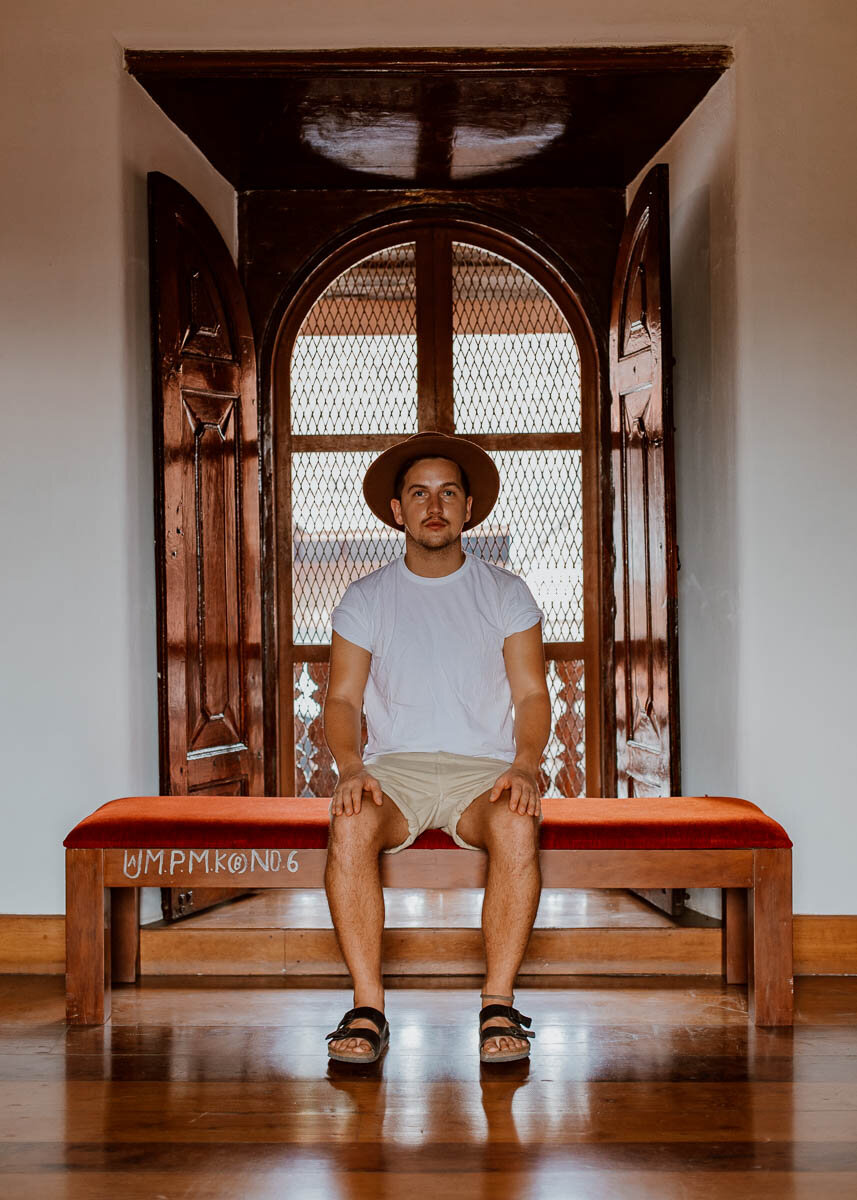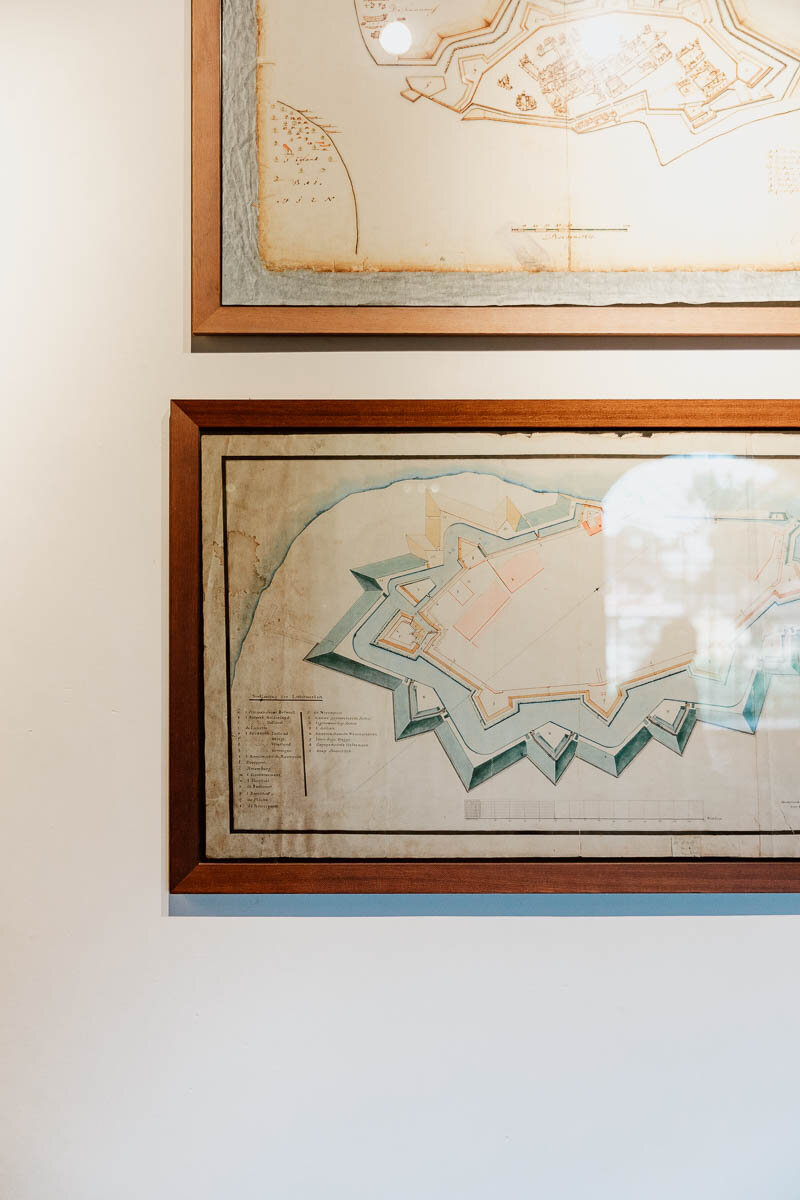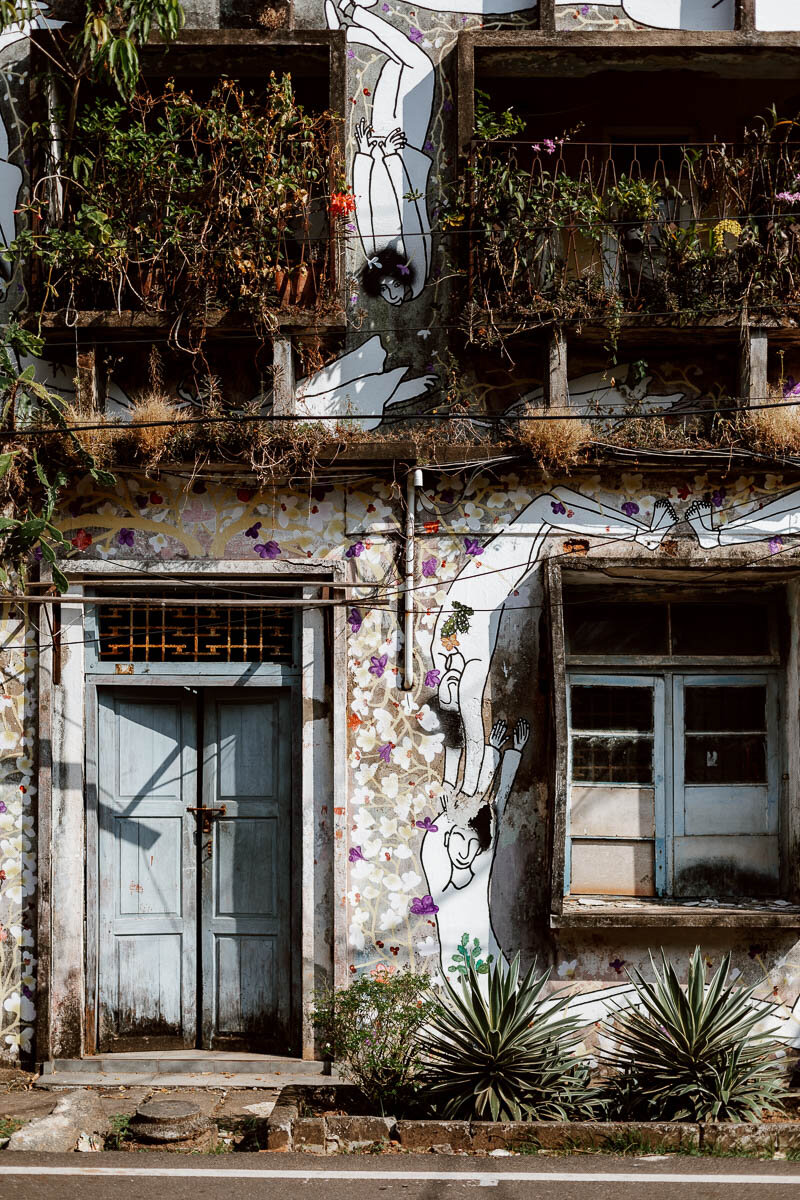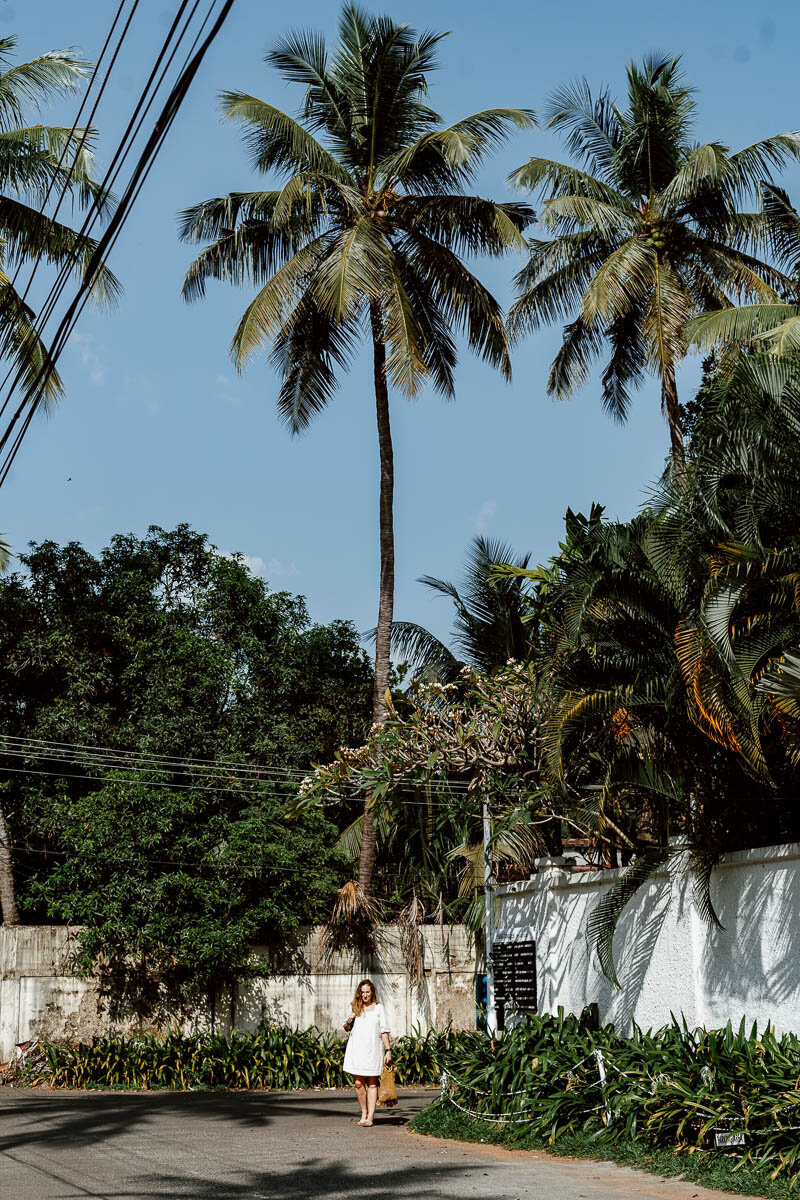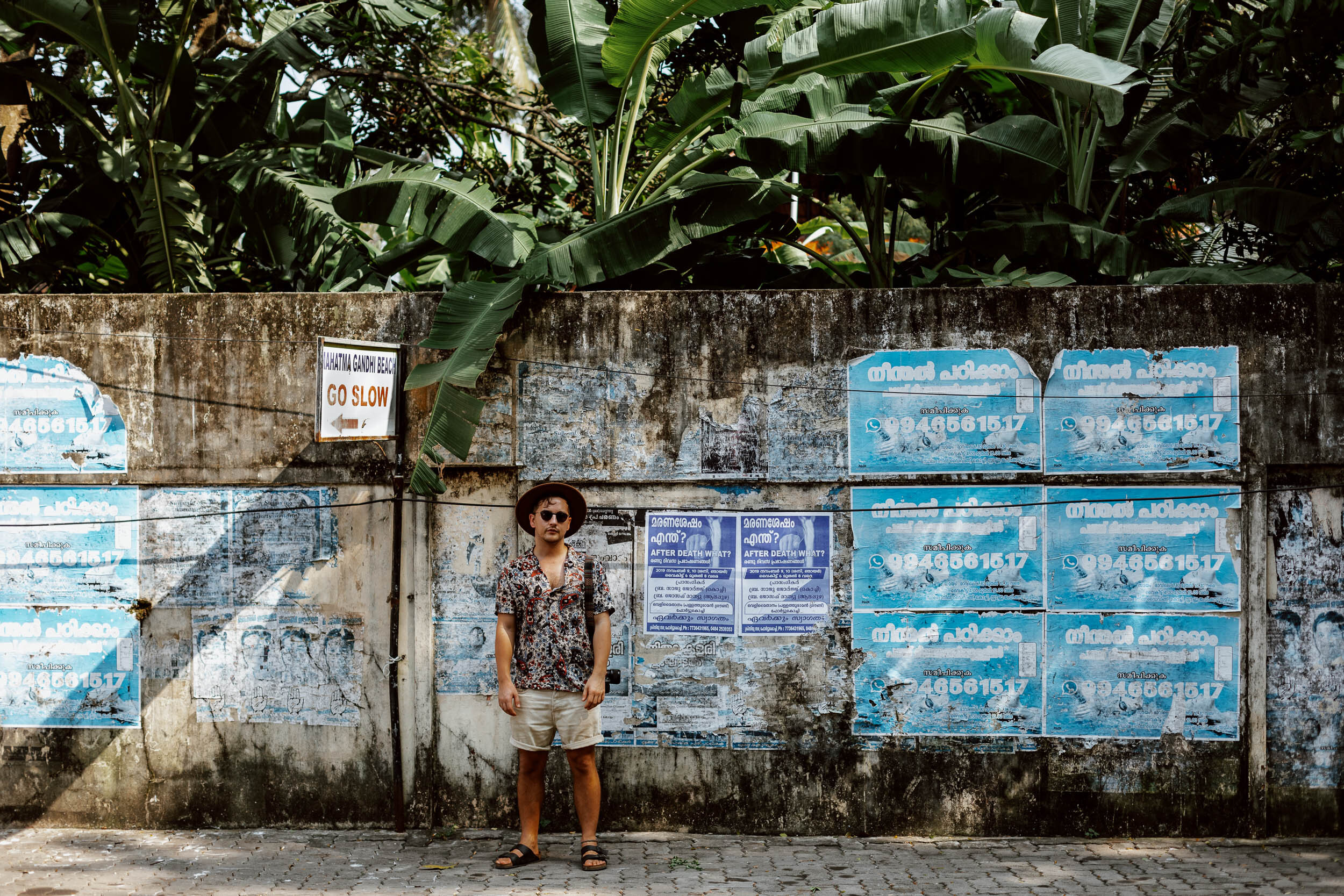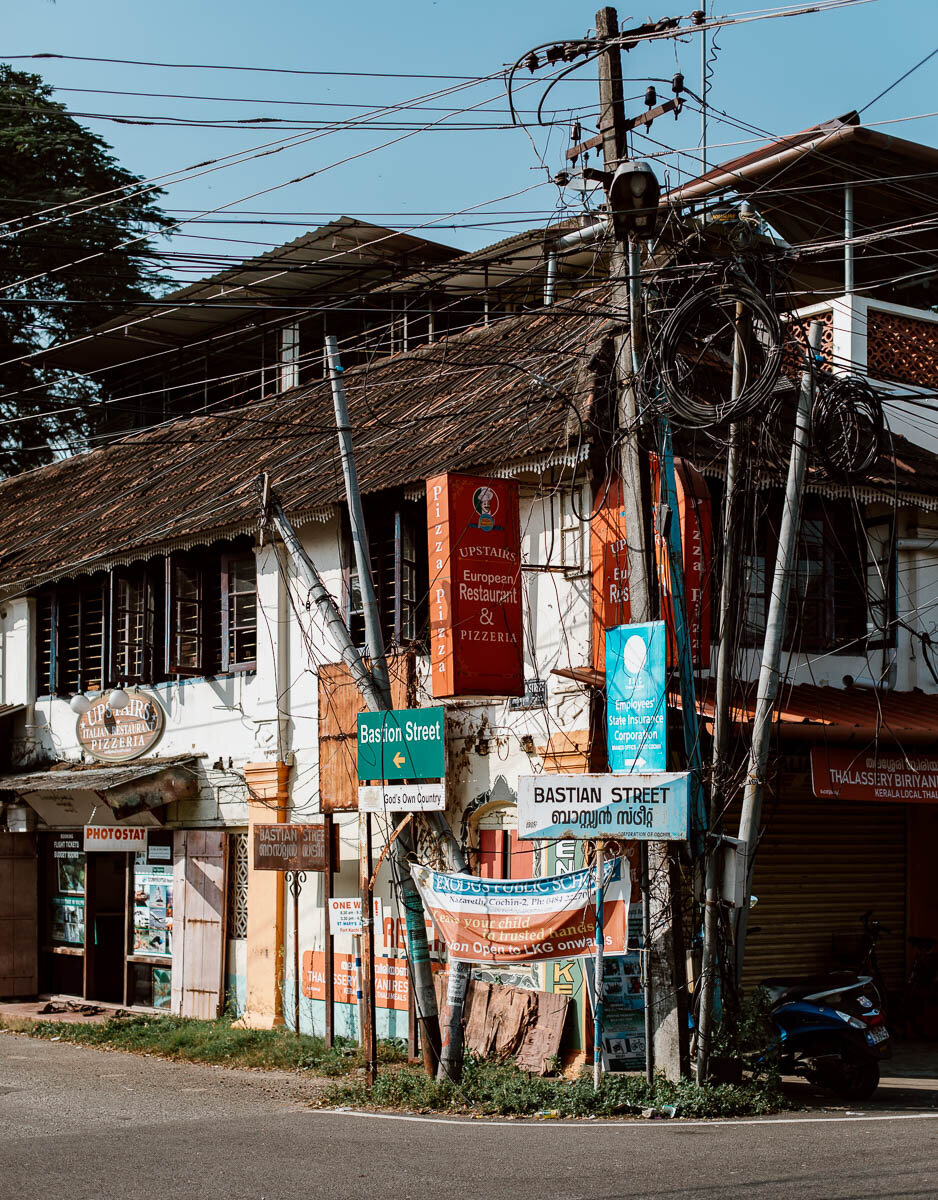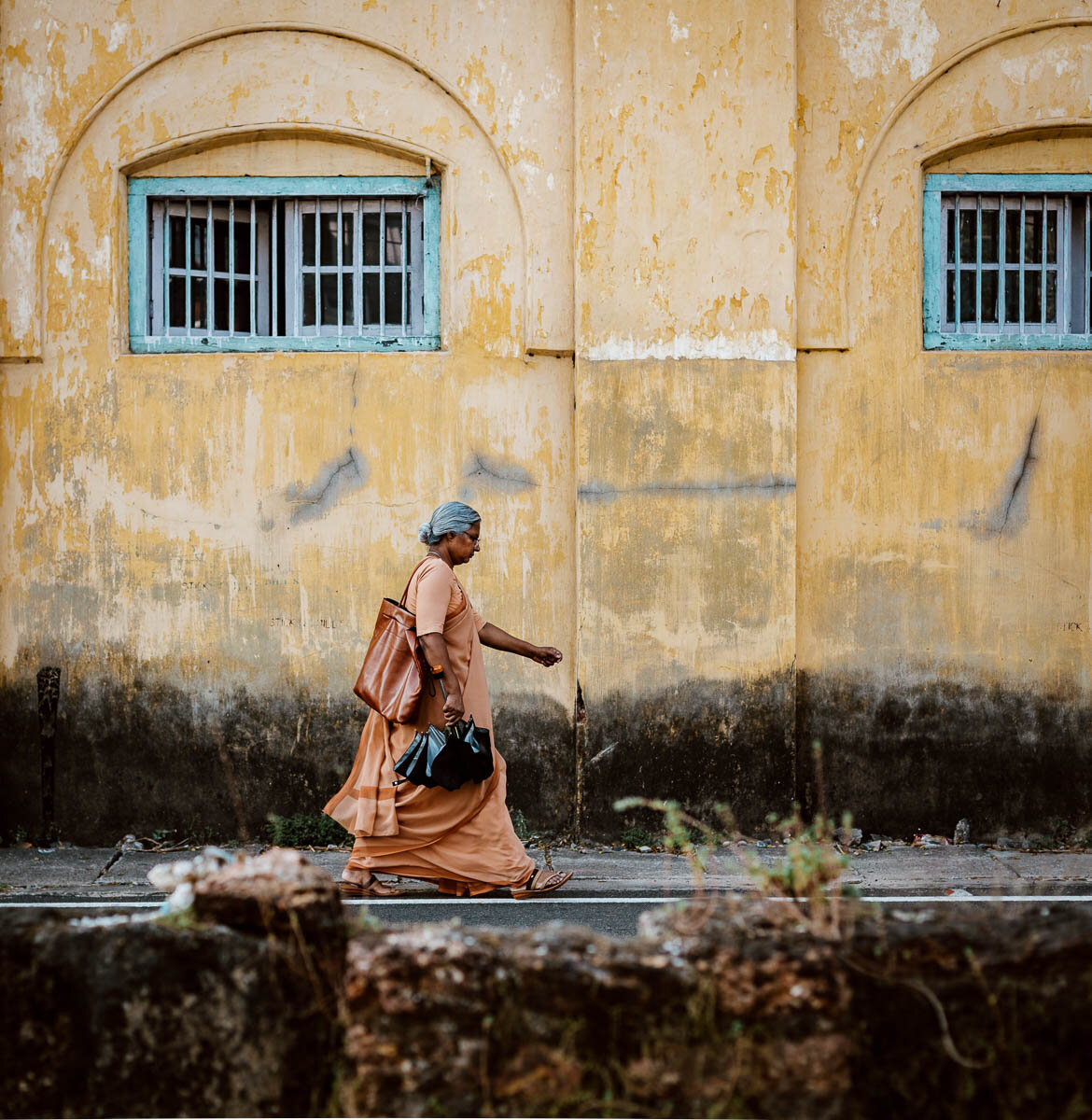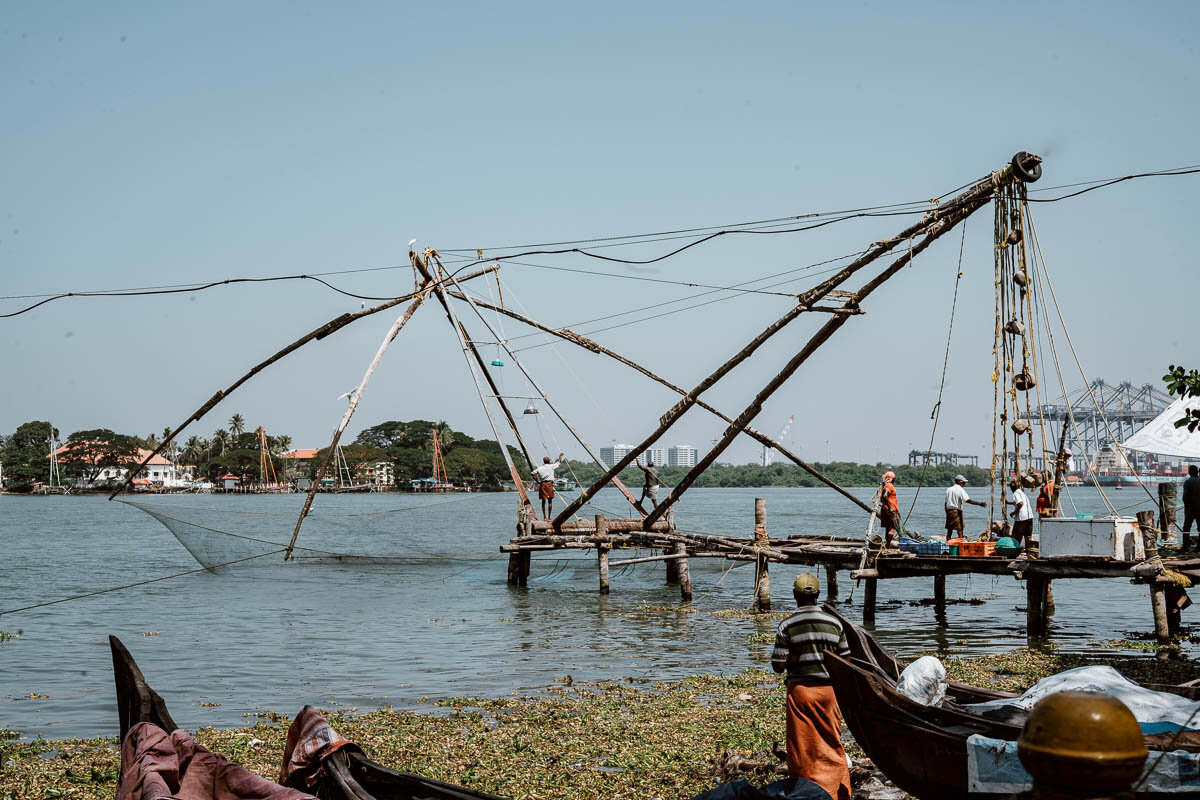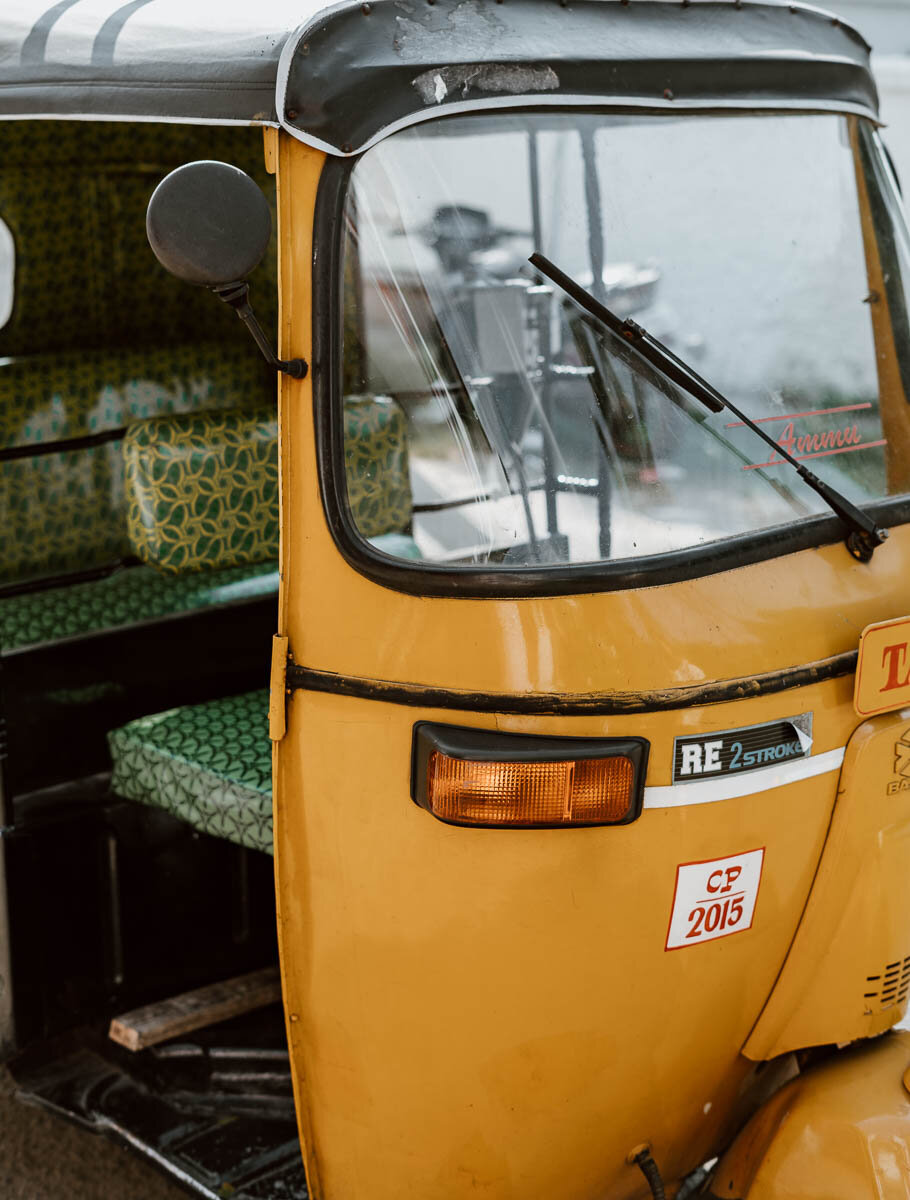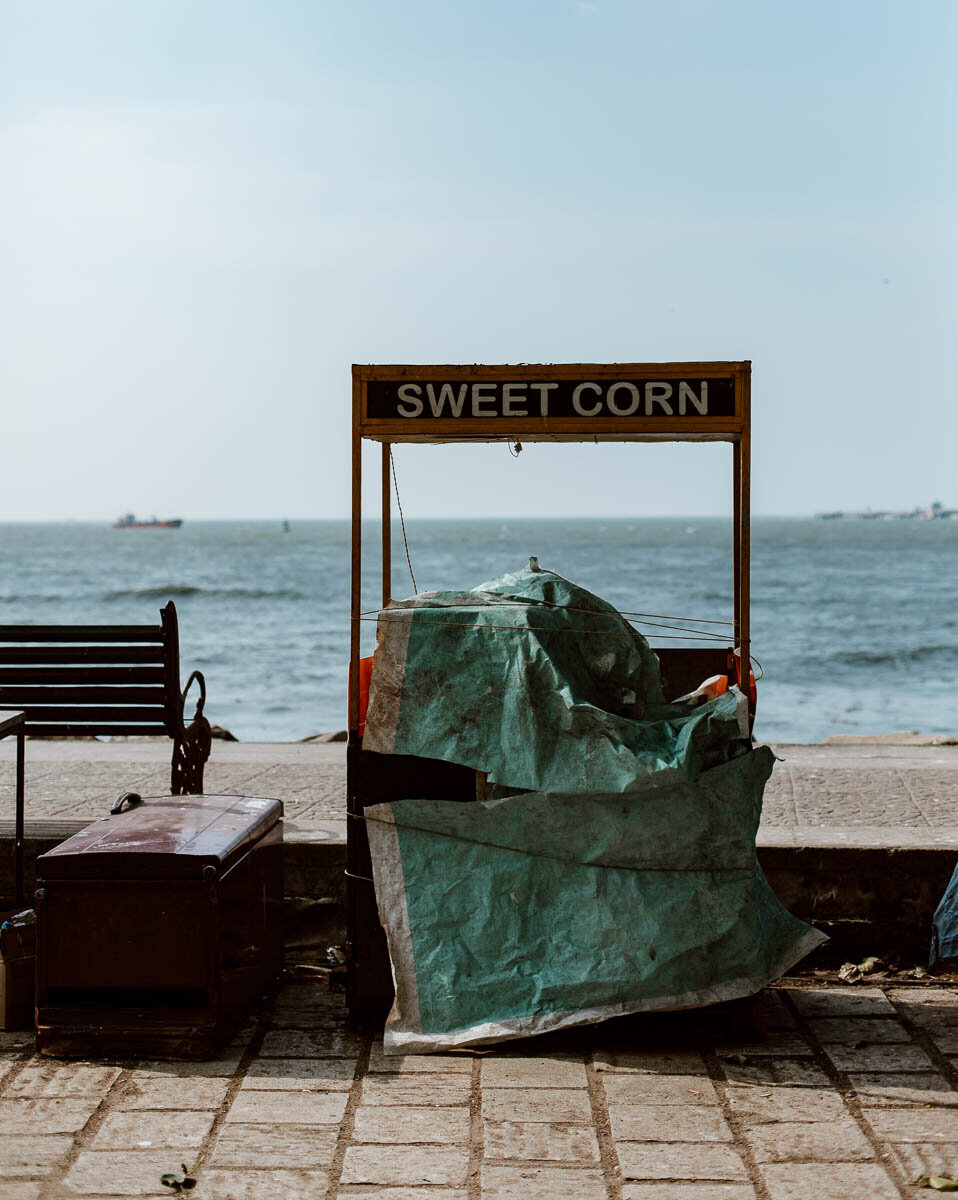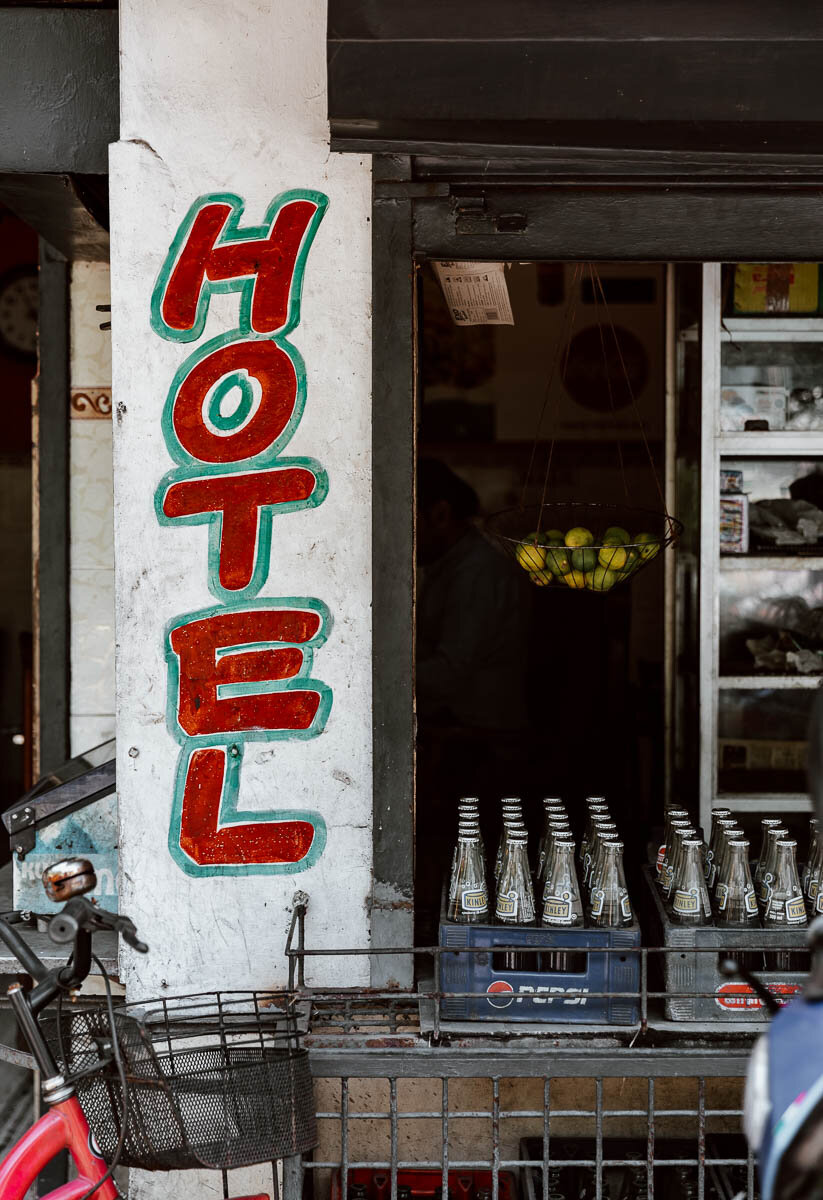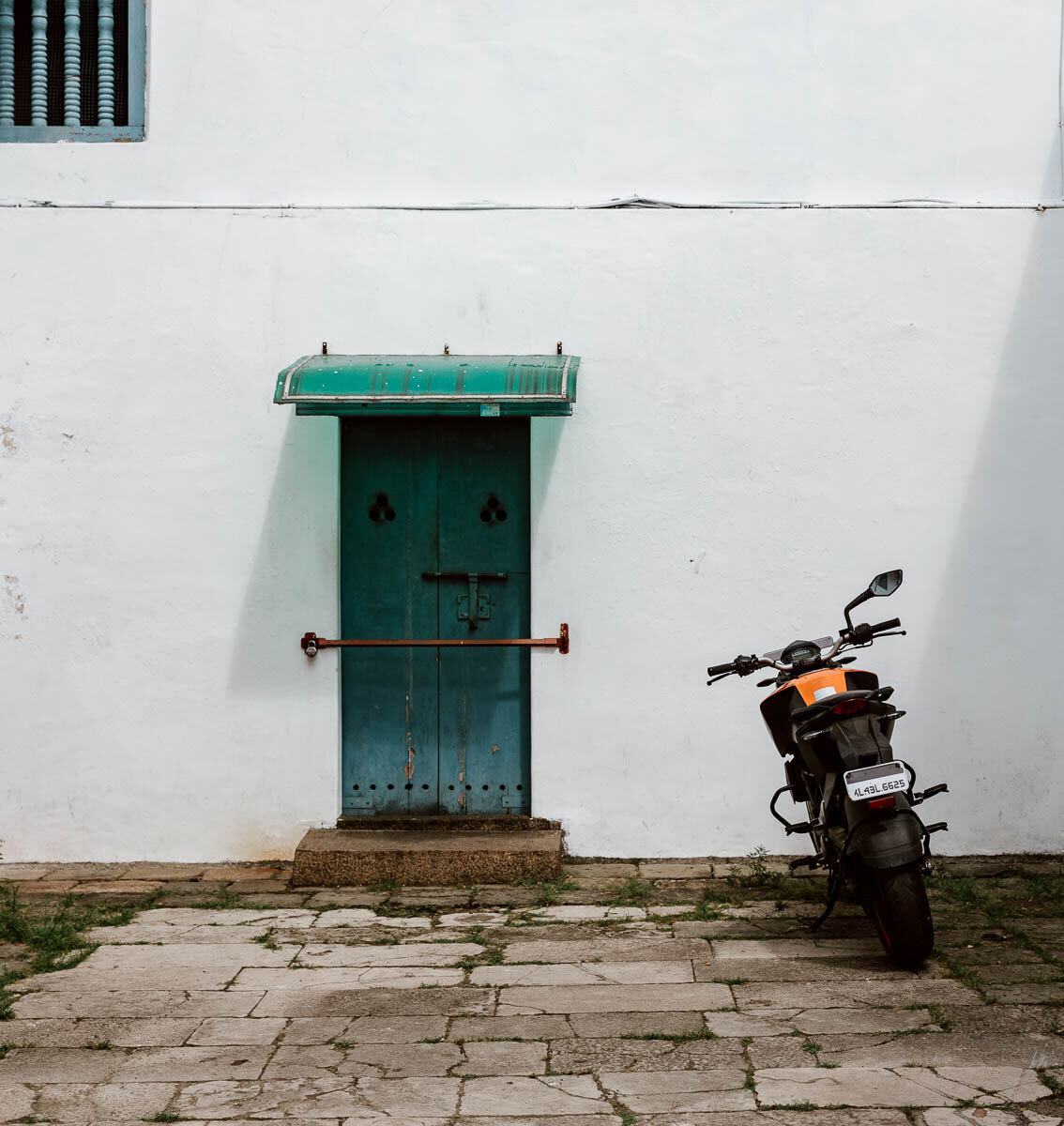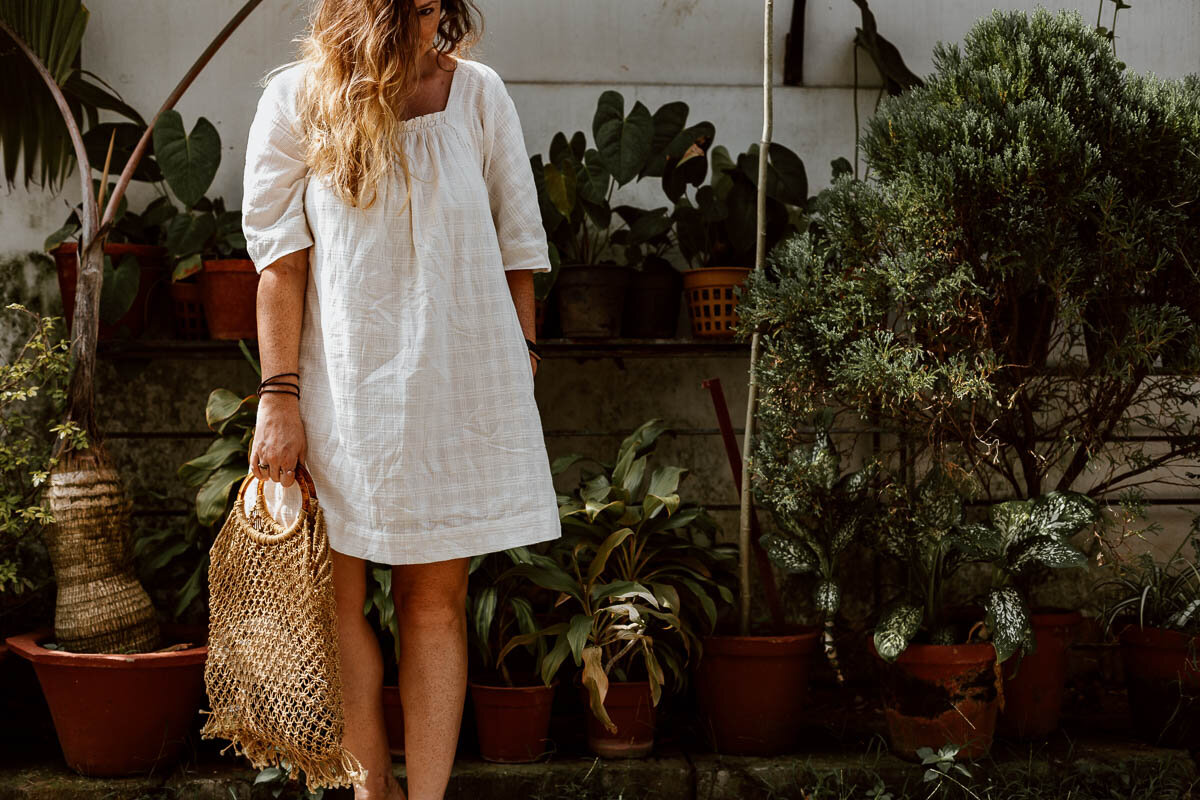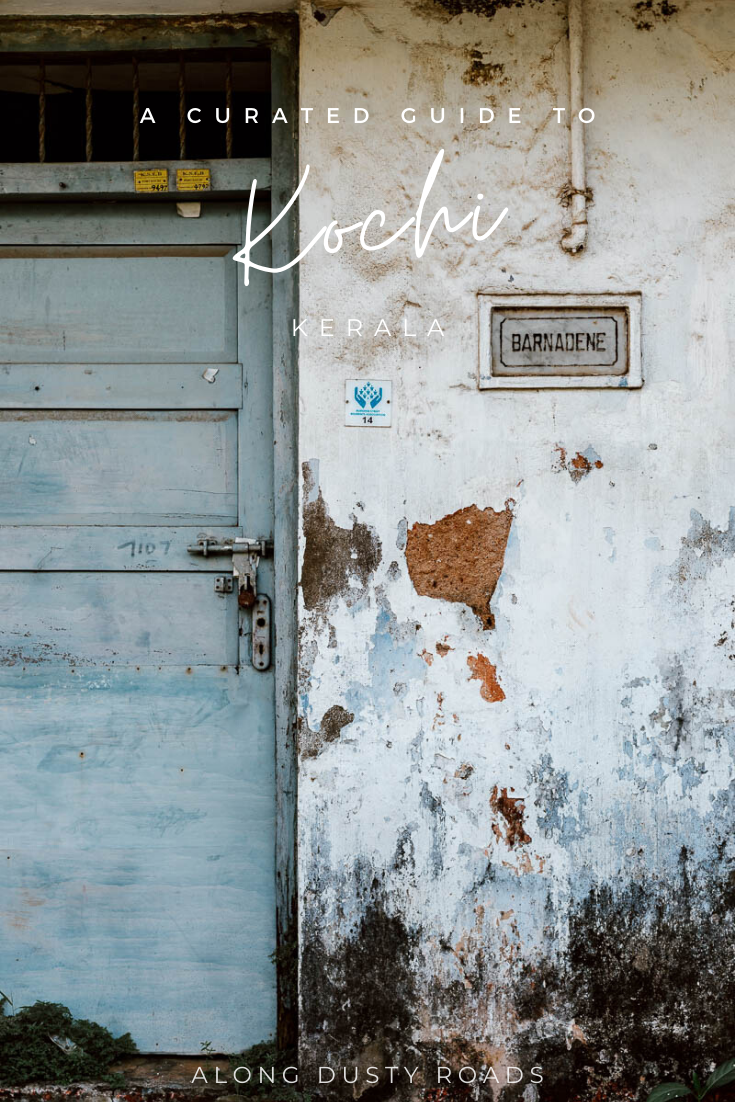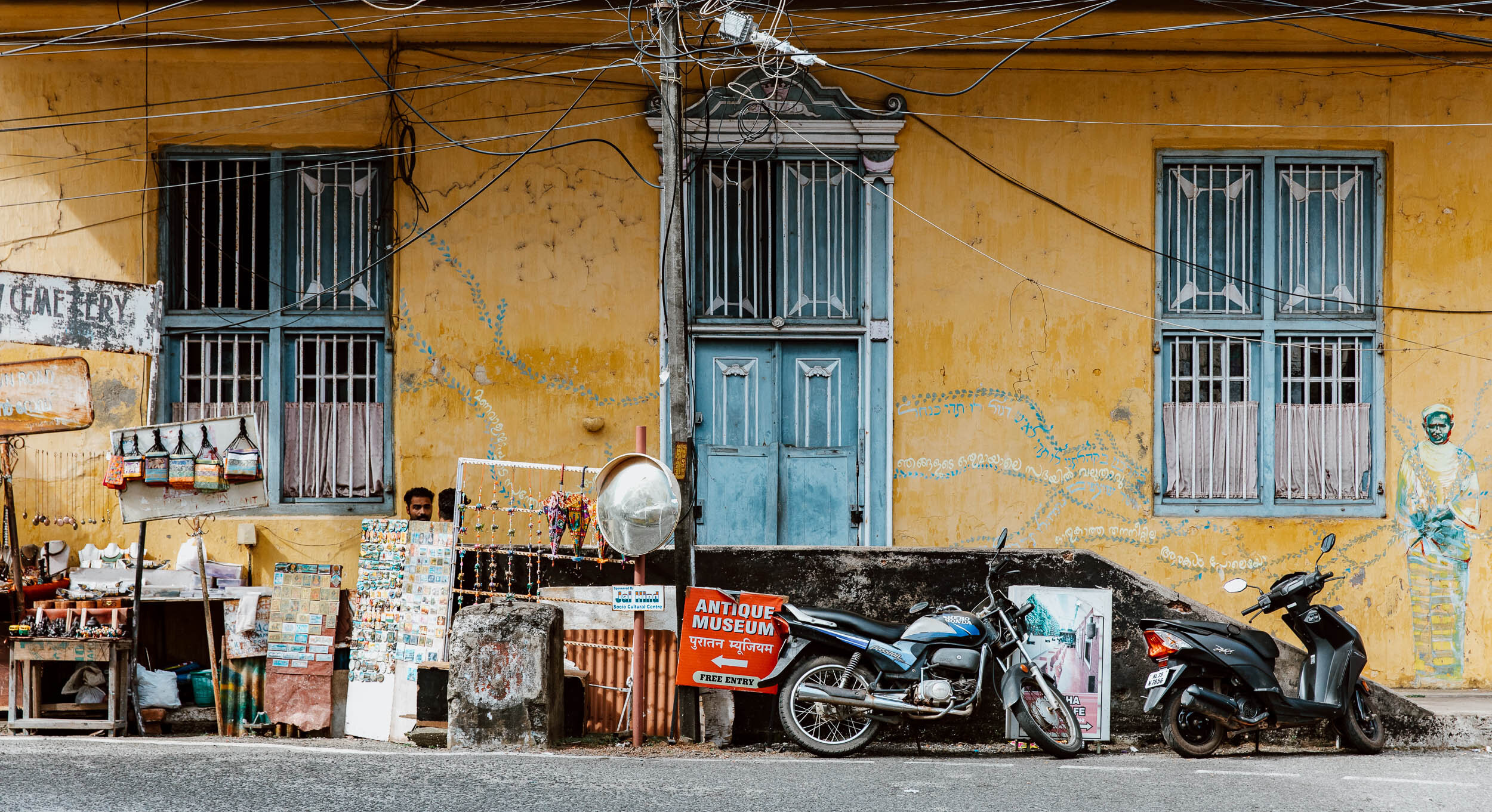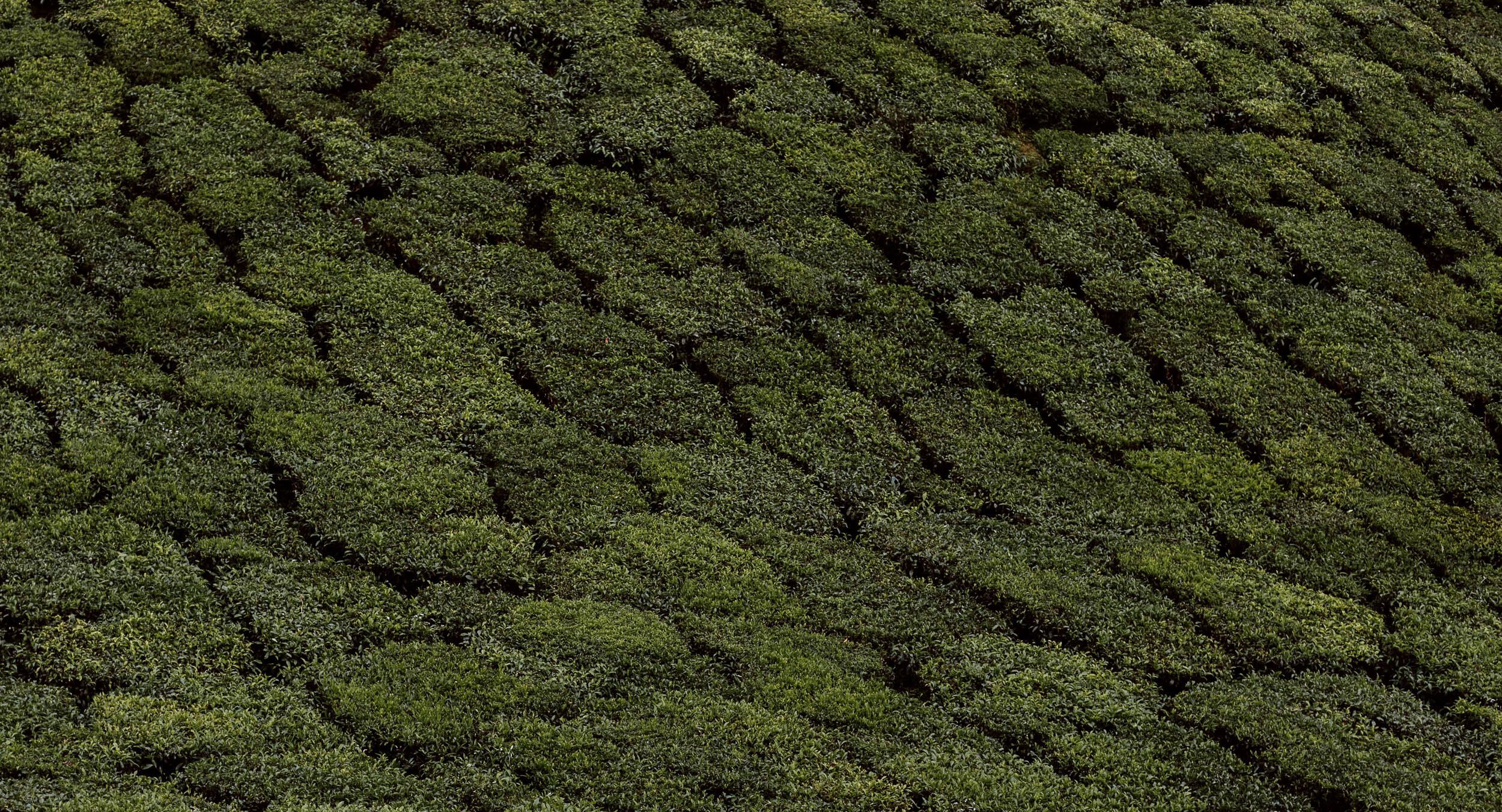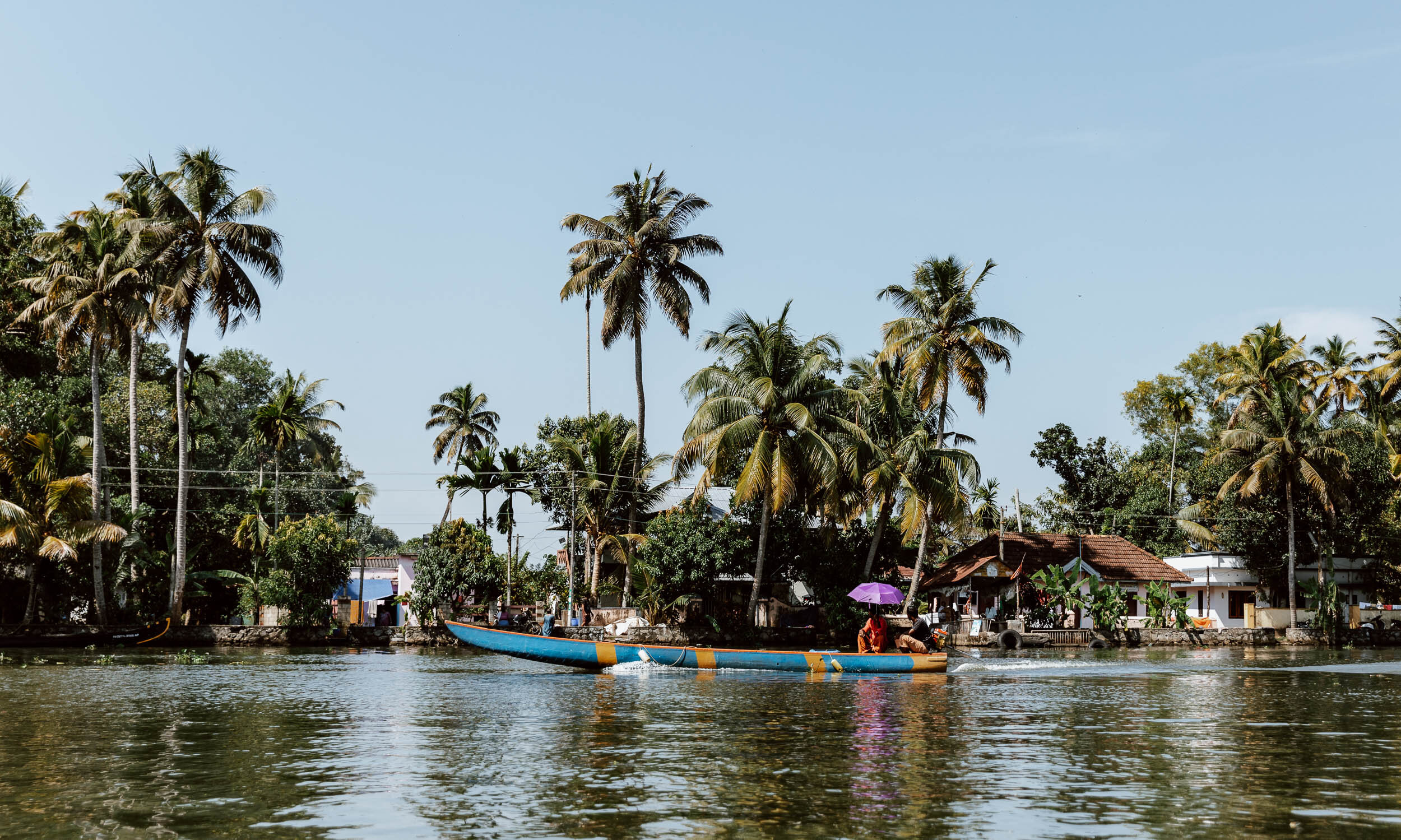Planning a a few days in Kochi (also called Cochin)? Our curated guide will let you know the very best things to do in Kochi, plus personal tips on where to eat, where to stay, and onward transport connections advice.
There were two queues for the ferry which was scheduled to depart in three short minutes.
On the right, dozens of black-haired men cramped and crammed between peeling white metals barriers jostled for supremacy. On the left, four women in rainbow saris which sparkled serenely awaited their turn to purchase the flimsy paper tickets.
It was clear that the members of 'females only' line were the only ones guaranteed not to miss the boat.
A tuk-tuk driver at the back of the disorderly scrum, returning from a day off with his teenage son across the industrial water for a morning of shopping and bonding, spotted his opportunity in us. Rat-a-tat introductions and handshakes were made before silver rupees exchanged and Emily sent on her way to purchase four tickets from the females only queue for three men and herself.
Our gang of four made the ferry from Ernakulam to Kochi with only seconds to spare.
Tuk-tuks, sunshine, and an artfully crumbling avenue greeted us on the other side, as we took our first steps in a port city which has been stepped onto by many an explorer, many a nationality, and many a merchant since the 14th century. Foreign influences on Kochi (or Cochin in the native tongue) are numerous and clear, with Portguese houses, Chinese fishing nets, and a Dutch cemetery; this ‘Queen of the Arabian Sea’ was long a historical pawn, sought after for its spice trade commerce and strategic maritime possibilities.
Vasco de Gama, Portugal’s most influential global phenomenon (sorry Ronaldo), even died here.
For the modern day traveller, Kochi has progressed into Kerala’s answer to somewhere like Cartagena in Colombia. The pockmarked and drawn-upon coloured walls frame a storied heritage in the neighbourhoods of Fort Kochi and Mattancherry, but this story is taken forward with a hybrid of local and foreign hipster tourism tastes for good coffee shops, little boutiques, grand colonial-style hotel hideaways, and progressive art. Reflecting this direction, and Kochi’s wedding of the new with the old, it featured in the Lonely Planet's list of top 10 cities in the world to visit in 2020.
The ride in the dark and dilapidated diesel ferry from Ekvadarum will mark the beginning of most trips to Kochi for those making their way north or south in Kerala. However, as the city is also home to the main international airport of this beautiful Indian state, a good portion of travellers’ first stop in India will actually be here. If the latter applies for you, then rest assured that a few days in Kochi will provide a gentle, photogenic, and pleasant introduction to the country.
We spent five days slowly exploring the streets, the food, and the history of Kochi on our month-long trip through Kerala & Goa, and created this personally curated guide so that travellers can know exactly how to make the most of their time in the city.
These are our favourite things to do in Kochi, including personal tips on where to stay, how to get around, useful things to know before you visit, and advice on onward travel connections.
To Avoid Cochin Confusion…
The city is called Cochin and Kochi, and we will refer to it as Kochi within this guide for consistency.
The two areas which travellers will spend most of their time exploring within Kochi are Fort Kochi (also called Fort Cochin) and Mattancherry.
Cochin International Airport is the local airport, whilst the bus stations, the train stations, and principal ferry port are across the water in Ernakulam, the mainland area of the city.
Clear as mud eh?
Our Favourite Things to Do in Kochi
Take in a Kathakalī Show
We saw images of the Kathakali performers all over Kerala, but it’s only in Fort Kochi where an outsider is really able to understand and appreciate this 300-year old local art form.
A Kathakali show brings together extravagant costumes, colourful make-up, live music and singing, and the telling of an epic Indian story with not a single word uttered from the performers. Instead, the actors communicate via a complex and labyrinthine system of hand gestures, facial expressions, head nods, and symbolic movements.
If that all sounds a bit confusing - or makes King Lear seem like a mere simple play by comparison - then that’s all part of the fascination.
We knew the show was going to be a popular tourist draw (it was a full house when we visited), but neither of us was actually terribly excited about it. In our experience, tourist-centric performances of traditional music or dance can be a little underwhelming, manufactured, or distant - something that has to be done than necessarily enjoyed - and that’s what we assumed would be the case here.
However, the whole event was thankfully much better and more memorable than we had anticipated - in large part due an additional hour at the beginning where the three main performers gathered on the stage to put on their make-up in an astoundingly transformative ritual.
Good To Know | At only 350 rupees per person (£3.7 / €4.3 / $4.9), the Fort Kochi Kathakalī show is great value. The make-up application starts at 17.00, with the show beginning at 18.00 (don’t be late!)
You can purchase your ticket directly for the show at the Kerala Kathakali Centre Theatre (Google Maps), but it's easier to just buy it from your hostel or guesthouse for the same price. Do note however that tickets are for specific seats, the shows do sell out, and that you ideally want a seat in the front 6 - 8 rows if you’re a photographer.
The theatre is within easy walking distance of most hostels, guesthouses and hotels in Fort Kochi - but just note that it's on a bit of a dangerous road bend so be careful entering / exiting. There's a big sign for the Centre; follow it down a narrow alley, passing a small restaurant on the left hand side.
The centre also host daily events, workshops, and classes about the traditional arts, music, and dance of Kerala (as well as meditation and yoga). Find out more on their website.
Iced Coconut Milk Coffees at Kashi Art Café
On the prettiest little street in town, Kashi Art Café is one of the hippest and most stylish spots to escape the heat and hang out in Fort Kochi.
It's incredibly popular for lunch amongst travellers seeking modern twists on local food alongside healthy traveller favourites and smoothies, juices, and decent coffee. It's also very vegetarian and vegan friendly (and if you’ve just arrived in India and overly concerned about the food, the perfect introduction for your palate and gut).
We went twice during our stay to sup the delicious iced cocunut milk coffees through paper straws in long glasses, and we'd also highly recommend this place for any digital nomads in the city looking to catch up on work.
Tip | There are several excellent modern traveller hangouts and eateries in Fort Kochi. The Breath vegan cafe by the roundabout is a great shout. It's run by the team from Breath Inn Homestay (their typo, not ours), which offers accommodation and yoga, and has a vegan menu full of goodness alongside some Japanese specialties. The brand new Loving Earth Yoga Cafe, with its fresh 100% plant-based menu, is also excellent.
Loafers Corner Cafe, which has a pleasant garden area, is a popular option but we felt the indoors space was far too dark (even when sitting in one of the window seats) and the menu a little overpriced.
Read Later | 23 Things To Know Before You Visit Kerala
Do The Best Cooking Class in Kochi
Wherever we travel, we try to take a cooking class.
Aside from the benefits of being able to stuff our faces and claim that it’s part of a cultural activity, it also offers a great opportunity to enjoy a more accessible insight into a destination's history, people, and produce in a fun, informal setting.
Given the reputation of Keralan cuisine, and how much we adore curries, this was one of the cooking class experiences we were most looking forward to anywhere. Unsurprisingly, we therefore spent A LOT of time researching the options in Kochi.
The online consensus appeared to be that Maria's South Indian Cooking Class, taking place in her second-floor home on Burger Street, was the best option out of the half-dozen or so scattered across Fort Kochi.
Her husband George, with a warm handshake, erudite tongue, and tales of his tall grandfather's adventures to Britain, greeted us at the top of the stairs when we arrived to book our class for the following morning. Unlike many other cooking classes which offer a relatively fixed menu, Maria actually asked what we would like to cook and eat together. This meant she was more than happy to accommodate our preferences and to source the ingredients for a vegetarian feast of paneer butter masala, fresh mango pickle, vegetable kadai, naan bread, bhajis, and veg tempura.
We were joined by a young British chef who was travelling around India with the sole purpose of learning about its food. She had taken several cooking classes in Kochi, including the more famous one at Leelu’s Homestay (which she didn’t actually rate terribly highly), but Maria's was the class she chose to return to so that she could learn even more.
For the class itself, the ingredients are pre-prepared and laid out so that the focus is on learning about the food, understanding the ingredients, and helping Maria to cook it all - rather than just sitting and chopping for 30 minutes. Maria used to run a restaurant, and has been doing these classes for 17 years, so is incredibly knowledgable. One of our main takeaways was that we use far far too many spices when we try conquer a curry at home, and that the interaction of all of them is much more complex than we had appreciated.
Even if you don't enjoy cooking, we guarantee that you'll have one of the best feeds during your whole time in Kerala (Emily had to roll Andrew back to our guesthouse afterward).
Good to Know | We paid Rs. 800 (£8.5 / €10 / $11) each for the class - including a 100 rupee deposit - which felt like excellent value. Maria offers two classes a day, one in the morning and one in the afternoon, but unfortunately you cannot book your cooking class online. Therefore, your best bet is to call or send her a Whatsapp message on +9746887454.
Alternatively, if you're going to be in Kochi for a few days, just pop into her house to enquire about availability and agree a time. We were lucky to have only three of us in our class, but there can be up to 12+ in a group (which we think would feel a little cramped).
You will also receive Maria's fiercely guarded hand-written recipes - please respect her wishes and keep these private, rather than sharing online.
Explore Bazaar Road (Not Street Art)
Prior to our own visit, we had read in several guides that Kochi was a hub of street art in India. This is largely due to the influence of the Kochi-Muziris Biennale, the largest art exhibition and festival of its kind in South Asia, which takes places in the city (the next one takes place in 2020).
As lovers of the medium, this got us quite excited and we set out to try and find some of the finest examples. Unfortunately, having travelled in South America for two years and savoured some of the exceptional work found from Bogota to Buenos Aires, our expectations were admittedly a bit too high.
Street art in Kochi exists, and it's great that this scene is developing and will continue to develop, but its status was perhaps a little overstated in other guides.
However, every cloud has a silver-lining.
Our street art search brought us serendipitously to Bazaar Road, which resulted in one of our most memorable and authentic afternoons in India.
The crumbling and colourful street, which winds from the Mattancherry Palace to the Calvatty Canal, is home to wholesale merchants for a cornucopia of goods. Sacks of tobacco, rice, onions, potatoes, garlic, and spices are hauled and stacked, bought and sold, lifted and left in the heat, and it served as a wonderfully photogenic insight into how things still tick in Kerala.
We walked its full length twice.
Tip | If you walk from the Mattancherry Palace (more on that later), you'll eventually pass a woman's spice co-operative on the right hand side. Set inside a gloriously fading building, you will be able to sample a variety of teas and encouraged to buy some spices. It's a little over-priced and we'd like to have known more about the co-op and how it operates, but a more enjoyable environment and experience than many of the air-conditioned hard sell spice shops found in Jew Town.
A Morning in Jew Town
Although the title 'Jew Town' will make most people, quite rightly, wince, that's the actual name of this small but touristic area of Kochi.
The majority of the Paradesi Jewish community moved to Israel in the 1950s, but the neighbourhood continues to celebrate (and trade) off the back of its history. The small Paradesi Synagogue, built in 1568, is the main spot for visitors to gravitate towards at the end of a narrow street lined with men trying to drum up business for their gift and souvenir shops.
The Synagogue is little used these days for services, and is open to visitors every day except Fridays, Saturdays and Jewish holidays (10 a.m. - 12 p.m., then 3 p.m. - 5 p.m.). Visitors should enter the Synagogue barefoot and be dressed appropriately.
We were unfortunate that a large cruise ship group arrived in Jew Town half-way through our visit, definitely heightening feelings that we shouldn’t linger for longer than necessary.
Although Jew Town is more of a tourist zone these days, with its spices and perfume stores and constant appeals for you to come in and 'take a look', rather than anything bordering off-the-beaten track, it is incredibly photogenic. There are also a few dusty antique & vintage stores which are definitely worth your time - if we had more space in our backpacks, we would have hauled any number of old photos and trinkets back to our flat in the UK.
Our advice is therefore to make a little visit to Jew Town, but try to get there earlier in the morning whilst the streets are at their emptiest, the shops have just opened up, and it’s at its most serene. We grabbed cheap masala dosas for breakfast at a little locals place, which were pretty excellent, but there are also two or three modern coffee shops (The Mocha Café comes highly recommended) as well as restaurants overlooking the water.
Tip | To learn more about the history of the Jewish community in Kochi, and the moving story of one 93 year old who remains with very few others in Mattancherry, we recommend you read this article by the BBC.
Visit Mattancherry Palace
Built in 1545 by the Portuguese as a gift to a Keralan king in compensation for destroying another of his buildings, but nicknamed 'The Dutch Palace' due to the renovations undertaken by tall colonists from the lowlands, Mattancherry Palace is a necessary addition to any Kochi itinerary.
One of the grander colonial-era buildings in the city, we felt the real draws here were the intricate storytelling murals and friezes, some very well preserved and some heavily damaged, which depict legends about Lakshmi, Vishnu, and other Hindu deities.
There are also various portraits of of the Kings of Cochin, alongside artefacts, weapons, and dress, explaining the history of Kochi's royalty and the customs of the region.
Note that there's a Hindu temple within the site, at the foot of the entrance stairs, which is heavily used and does not allow admission to non-Hindus.
Good to know | Entry is just 5 rupees per person (less than 5p or 5 cents) and visiting hours are 9.45 a.m. - 1 p.m., then 2 p.m. - 4.45 p.m, every day except Friday and Saturdays. A one-way tuk-tuk from Fort Kochi is the best way to get there, and should cost 40-50 rupees; it can drop you off close to the entrance.
The proximity of Mattancherry palace to Jew Town on the eastern side of Kochi, with the two separated by a five minute walk, means that it's a good idea to pair your visits to the same morning or afternoon. Afterwards, we recommend you take a wander along Bazaar Road where you can see various local market stalls and traders. Note that the gentlemen on the left hand side corner just after the first fruit stall you'll come across on Bazaar Road if walking from Mattanchery, serve up a mean masala dosa or puttu and chai for a quick breakfast or small lunch.
To find out more about the history and architecture of Mattancherry Palace, read this article by Cultural India.
Read Later | What Things Cost in Kerala
Wander the streets of Fort Kochi
As you’ve likely become aware, many of the main tourist attractions (and indeed our personal recommendations) can be found in the specific area of Kochi known as Fort Kochi. However, we’d be remiss to not encourage you to explore this neighbourhood beyond these activities, for it is along these cobblestone streets that you will discover the influence of a colonial past.
Perhaps the most famous and notable foreign influence in Fort Kochi is that of the Portuguese, or more specifically their most well-known explorer, Vasco de Gama, who built the fort here from which this trading post found its name. And whilst the fort is no longer standing, multiple churches built during this period are, including Santa Cruz Basilica and the Church of St Francis (the first European church, and the initial burial site of Vasco de Gama himself).
Princess Street, and the streets surrounding it, whilst being incredibly photogenic, also play host to a variety of excellent shopping opportunities. You’ll have to bargain hard, but if you’ve just arrived into India, it’s a great place to stock up on some lightweight and modest clothing (though the quality varies).
Be sure to also venture down the slightly more upmarket Napier Street, where beautifully broken-down mansions sit alongside some of Fort Kochi’s more exclusive accommodations (like Malabar) and a handful of exquisite boutiques. We’d absolutely recommend stopping by One Zero Eight, a pop-up store featuring a number of Indian designers which pays tribute to the 700 female artisans whose looms were destroyed in the tragic flood of 2018 (a catastrophe that the local hand looming industry is only now beginning to recover from).
Top tip | Art lovers should consider timing their visit to Kerala to coincide with the Kochi-Muziris Biennale, the international exhibition of contemporary art held in Kochi, Kerala. The largest art exhibition in India, it runs every two years (the last was December 2018 - December 2019), and the showcase transforms Fort Kochi into a living, breathing, art space; this is a core reason that the Lonely Planet has listed Kochi as a must-visit destination for 2020 (and the only one in India).
Eat on KB Jacob Road
If you've made it this far, or read any of our other Kerala guides, you'll know that we are curry fiends. Though there are a few fancier options for local and fusion fare within Kochi (like Seagull, Fusion Bay, and Malabar House), that's not really our scene.
So, if you're looking for something similar within the Fort Kochi neighbourhood, your best bet for a good dinner is to walk along KB Jacob Road, on the stretch from the roundabout to the junction with Tower Road. We recommend Krishna Kripa for curries (Google Maps), whilst if you've never had momos before, you should definitely get a delicious plate of them at the two-storey Tibet Kitchen (although don't expect a smile from the woman serving you). There were a also a couple of cheap and cheerful local places close to the roundabout, but we weren't able to try them out - let us know in the comments if they're decent!
If you want really good coffee and pizza / pasta (by India standards), then make a beeline for the laid-back pavement restaurant of Pizza Italia on Tower Road (Google Maps), which is owned and run by an Italian who does everything right.
Confusion at the Chinese Fishing Nets
These fishing rigs of bamboo and teak are Kochi’s most famous photospot, and definitely worth at least 10 minutes of your time.
With a rudimentary yet ingenious design, the three or four examples in Kochi continue to be operated for both trade and tourists. Each has a crew of around five men, some who look far too old to be doing such physical work, and it’s mesmerising to watch them push and pull, shout and sprint every few minutes to dip the gargantuan net in and out of the deep. Their rhythms and well-honed choreography upon the rickety contraptions, with ropes weighed down by stones, reminded us of pirates.
For a few rupees, the fishermen will happily invite you onto the rigging for a closer look and the opportunity to take photos, which, in hindsight, is probably something we should have done, but unfortunately weren't really in the right mood at the time (yes, we were having an argument!). If you do it, our advice is to get an idea on how much the tip will be beforehand as this can always cause issues at the end of many a positive experience in India.
The Chinese fishing nets are parallel to a small promenade where various men sell toys, jewellery, fresh juices, and trinkets. It can become quite busy, and many people will either be trying to sell you something or request a selfie. There are also three or four stalls selling fish fresh from the nets (and from elsewhere). They have a basic open-air kitchen and some tables under the trees, and will cook up your selected fish for lunch or dinner for the very reasonable price of 100 rupees (however, as the fish is sold by weight and type, make sure you're getting a reasonable deal on that too before agreeing to eat there).
The promenade continues along the coast toward Fort Kochi beach, Mahatma Gandhi Beach, and a rocky viewpoint which juts slightly into the sea. However, these beaches are really not worth getting excited about in the slightest (they were covered in trash and had a rather unpleasant smell) - if you want a beach experience in Kerala, best go to Varkala or Kannur. Continue onward and you can look through the gates into the old Dutch cemetery.
Read Later | A Traveller’s Guide To Varkala
Insider Tip | Tuk-tuk drivers in Fort Kochi will be relentless in their requests to give you a 2-3 hour tour of the city's main sights (namely Jew Town, the Dutch Cemetery, the Fishing Nets, and a few others). They offer this for the insanely cheap price of 100 rupees; given that the usual rate for a 10-minute tourist tuk-tuk ride from train station to hostel is 100 rupees, this price is beyond believable. The reason? The tour includes handful of mandatory stops at official gift shops, for which the driver gets a commission. You don’t have to buy something in the shop, but it apparently begins to become quite annoying (and the largest part of the tour).
If you’re keen on the tour but less on the hard-sell at the souvenir shops, perhaps offer instead to pay the driver a little more up-front to avoid them.
We aren't against local guys being entrepreneurial and making an income from tourism, but we genuinely prefer to discover a place primarily on foot with our cameras, and so politely declined each request. However, we discovered on our third day in Fort Kochi that many waiting drivers would instead eventually ask a for a 'small favour', basically asking us to hop in the rickshaw for 30 seconds so they could drop us off at the gift shop round the corner, thereby earning them a small amount. As we confirmed that we would be under no obligation to buy anything or stay longer than a few minutes, we helped out a few times - but after doing it on three separate occasions, became a bit bored of it as well.
Read Later | A Traveller’s Guide To Varkala - Kerala’s Backpacker Beach Town
Savour a cold Kingfisher
We won't lie - after 5 p.m.,a decent portion of our time in Fort Kochi was spent rehydrating and relaxing in the shade at one of two licensed bars in the neighbourhood, where we could catch up on trip planning or simply watch snapshots of India go by outside. As we mention in our 23 Things to Know Before You Visit Kerala post, the state isn't completely dry but alcohol is typically only served in licensed premises (unless you’re in the beach town of Varkala). As the licence is expensive, establishments are few and far between, and often difficult to find. It also means the local beers in Kerala are more expensive than one will find elsewhere in India.
In Fort Kochi, your two best options to enjoy a cold Kingfisher, wine, or cocktail are:
Rain Tree | It's a relatively fancy restaurant as well as a bar, but we never ate here. Instead, just grab one of the outdoor balcony seats overlooking the busy junction and watch the world go by...A large Kingfisher costs Rs. 250 (£2.6 / €3.1 / $3.5).
Hotel Cochin Fort | Close to Santa Maria Hostel, this place is a little more hidden away and relaxed than Rain Tree, but beers cost about the same.
Insider Tip | If you want to visit the famous Kerala backwaters, then it is possible with a tour from Kochi. However, we recommend you read our guide to the Kerala Backwaters before you make any plans or book anything.
Where to Stay in Fort Kochi
We went down the spontaneous route upon our arrival in Kochi and didn't book anything ahead of time. This meant an hour walking around with our backpacks in sweltering heat stopping at lots of places for a decent private room, at a decent price. This wasn't really ideal as most double rooms were booked out, but we eventually settled for a cheap and welcoming homestay / guesthouse which did the job fine.
There are an abundance of homestays / guesthouses concentrated in the central Fort Kochi area and a handful of hostels - however the latter tend to only offer dorms. What's the difference between a guesthouse and a homestay? Read our 23 Things To Know Before You Visit Kerala post.
Here are our personal accommodation recommendations on where to stay in Kochi.
Hostels In Kochi
Happy Camper | A fresh and clean little backpacker hostel in a convenient location on KB Jacob Road, it offers dorms with private security lockers plus good communal spaces. Check availability or make a booking here.
Zostel | A relatively new hostel chain which is popping up all over the backpacker trail in Kerala, Zostel is just down the road from Happy Camper and provides a similar level of comfort and experience for travellers looking for a social stay in Kochi, including a female only dorm. In addition to the dorms, it has one deluxe double private room, but it's usually booked out. Check availability or make a booking here.
Santa Maria | Tucked away on River Road, Santa Maria is close to the ferry port, but about a 7-minute walk from KB Jacob Road and the main hub of Fort Kochi for backpackers. However, it's right next door to a licensed bar, breakfast is included, and has way more doubles than any other hostels in Fort Kochi (as well as 4-6 bed dorms). This is where we had planned on staying, but there was no availability when we turned up. Check availability or make a booking here.
Guesthouses / Homestays
Chackalakkal Homestay | We arrived here after the hour walking around had proved fruitless, and were given a warm welcome by the family who live in the home downstairs. The basic double room with private bathroom was cheap at 600 rupees (900 if you wanted the air-con), but suited us absolutely fine. This wasn't one of the fancier homestay experiences where you eat and interact with the family, but more of a standard guesthouse. Check availability here.
Highly-rated homestays in Kochi include Bastian Homestay, Samaria, Leelu’s, and i-One's Home Stay.
Hotels in Kochi
If you prefer more comfort, convenience and service than a guesthouse or hostel, the best hotels in Fort Kochi are:
Solo Inn | This is a great option for couples looking for a hotel in Kochi that doesn't break the bank. Its highly-rated deluxe double rooms, including AC, are clean, modern and comfortable whilst most guests say the included breakfast is excellent - check prices and availability here. A good alternative if your budget is a little higher is Zen Kochi.
Secret Garden Boutique | We think this offers excellent value for a visitor looking to stay in a comfortable setting which retains stylish and quirky colonial-era interior design principles. With private gardens, a pool, yoga classes, a great breakfast, and free bikes, it's perfect for a more mature couple or group exploring India together. Check availability or make a booking here.
Forte Kochi | This exquisite heritage hotel is perfect if you are looking for a splash of luxury, colonial-era decor, and a drop of decadence during your time in Kochi - it really is quite wonderful - check availability for your dates here.
An excellent alternative, recommended by a long-time follower on our Facebook page, is the Old Harbour Hotel.
How To Get To and from Kochi
COCHIN AIRPORT ARRIVALS
If Kochi is your first stop in Kerala, then chances are that you're flying into Cochin International Airport (home of our quite possibly our favourite airport code - COK). The airport is 45 kms from central Fort Kochi, but is easily accessible.
Travellers have three options to get from Cochin Airport to Fort Kochi.
The Airport Bus | Outside the arrivals terminal, it's easy to spot the government-operated orange buses which will bring you to the centre of Fort Kochi in about 2 - 2.5 hours depending on traffic. Operated by KSRTC, they're quite regular throughout the day, but you can find the timetable here. The air-con bus fare is Rs. 85 (£0.9 / €1 / $1.2). The bus also does the return journey from Fort Kochi to the airport.
A Local Taxi | In the arrivals terminal, you will find a registered taxi booth where you simply have to give the street name of your accommodation and you'll receive a print-out of the exact fare, which should be around Rs. 1,200 (£13 / €115 / $17) to somewhere in central Fort Kochi. Travel time is around 90 minutes. If you already have mobile data for India, then you could also check Uber or Ola.
A Private Taxi | If you would prefer the added convenience and comfort of a pre-booked private taxi from the airport straight to your hotel, then you can book this private airport transfer.
If flying into Kochi from Europe or elsewhere to begin your Kerala trip, then check out our 23 Things To Know Before You Visit Kerala post before you arrive, including tips on why you shouldn't change a lot of money or get your SIM card at the airport.
The Ferry + Train
For those travelling overland through Kerala, the busy urban sprawl of Ernakulam is going to be you main arrival and departure point for Kochi. There are regular trains to/from both Alleppey (Rs. 150 per person in sleep class, 1.5 hour journey time) and Varkala (3 hours).
We recommend you alight at Ernakulam Junction train station (there are a few other stations in Ernakulam).
From the train station to the Ernakulam Ferry Terminal (Google Maps), simply go to the little tuk-tuk office at the rank outside and state your destination. You’ll have to pay the man in the office 2 rupees, and you’ll receive a ticket with the stated fare. Take this to the nearby driver and you’ll be on your way - journey time was less than 10 minutes and cost Rs. 33 (which is paid to the driver at the end).
Inside the terminal, buying a ticket is pretty self-explanatory (including the male and female specific line system A one-way ticket to Fort Kochi was Rs. 4 per person, with two departures an hour in the afternoon (you can view the official timetable here).
The Bus
We travelled onward from Kochi to the hill station town of Munnar via the KSRTC bus station in Ernakulam (Google Maps). A morning tuk-tuk ride to the bus station from Fort Kochi cost us Rs. 250 (25 minutes travel time), and the bus journey to Munnar was 6 hours.
Note that the bus station is really run down in comparison to the train stations of Kerala, but there are a few chai and food places inside and shops to pick up snacks. If unsure about the bus time or departure point, your best bet is to go to the station master's office and enquire therein.
